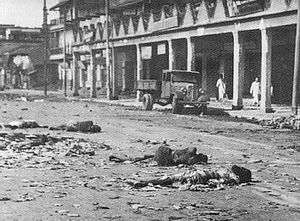History of India
The history of India includes the prehistoric settlements and societies in the Indian subcontinent; the advancement of civilisation from the Indus Valley Civilisation to the eventual blending of the Indo-Aryan culture to form the Vedic Civilisation;[1] the development of Hinduism as a synthesis of various Indian cultures and traditions; the rise of the Śramaṇa movement; the decline of Śrauta sacrifices and the birth of the initiatory traditions of Jainism, Buddhism, Shaivism, Vaishnavism and Shaktism;[2][3] the onset of a succession of powerful dynasties and empires for more than two millennia throughout various geographic areas of the subcontinent, including the growth of nomadic Central Asian Muslim dominions during the Medieval period intertwined with Hindu powers;[4][5] the advent of European traders resulting in the establishment of the British rule; and the subsequent independence movement that led to the Partition of India and the creation of the Republic of India.[6]
Evidence of anatomically modern humans in the Indian subcontinent is recorded as long as 75,000 years ago, or with earlier hominids including Homo erectus from about 500,000 years ago.[7] Considered a cradle of civilisation,[8] the Indus Valley Civilisation, which spread and flourished in the northwestern part of the Indian subcontinent from 3300 to 1300 BCE, was the first major civilisation in South Asia.[9] A sophisticated and technologically advanced urban culture developed in the Mature Harappan period, from 2600 to 1900 BCE.[10] This civilisation collapsed at the start of the second millennium BCE and was later followed by the Iron Age Vedic Civilisation, which extended over much of the Indo-Gangetic plain and which witnessed the rise of major polities known as the Mahajanapadas. In one of these kingdoms, Magadha, Gautama Buddha and Mahavira propagated their Shramanic philosophies during the fifth and sixth century BCE.
Most of the subcontinent was conquered by the Maurya Empire during the 4th and 3rd centuries BCE. From the 3rd century BC onwards Prakrit and Pali literature in the north and the Sangam literature in southern India started to flourish.[11][12] Wootz steel originated in south India in the 3rd century BC and was exported to foreign countries.[13][14][15] Various parts of India were ruled by numerous dynasties for the next 1,500 years, among which the Gupta Empire stands out. This period, witnessing a Hindu religious and intellectual resurgence, is known as the classical or "Golden Age of India". During this period, aspects of Indian civilisation, administration, culture, and religion (Hinduism and Buddhism) spread to much of Asia, while kingdoms in southern India had maritime business links with the Middle East and the Mediterranean. Indian cultural influence spread over many parts of Southeast Asia which led to the establishment of Indianised kingdoms in Southeast Asia (Greater India).[16][17]
The most significant event between the 7th and 11th century was the Tripartite struggle centred on Kannauj that lasted for more than two centuries between the Pala Empire, Rashtrakuta Empire, and Gurjara Pratihara Empire. Southern India saw the rise of multiple imperial powers from the middle of the fifth century, most notable being the Chalukya, Chola, Pallava, Chera, Pandyan, and Western Chalukya Empires. The Chola dynasty conquered southern India and successfully invaded parts of Southeast Asia, Sri Lanka, Maldives and Bengal[18] in the 11th century.[19][20] The early medieval period Indian mathematics influenced the development of mathematics and astronomy in the Arab world and the Hindu numerals were introduced.[21]
Muslim rule started in parts of north India in the 13th century when the Delhi Sultanate was founded in 1206 CE by nomadic Central Asian Turks;[22] though earlier Muslim conquests made limited inroads into modern Afghanistan and Pakistan as early as the 8th century.[23] The Delhi Sultanate ruled the major part of northern India in the early 14th century, but declined in the late 14th century when several powerful Hindu states such as the Vijayanagara Empire, Gajapati Kingdom, Ahom Kingdom, as well as Rajput dynasties and states, such as Mewar dynasty, emerged. The 15th century saw the emergence of Sikhism. In the 16th century, Mughals came from Central Asia and gradually covered most of India. The Mughal Empire suffered a gradual decline in the early 18th century, which provided opportunities for the Maratha Empire, Sikh Empire and Mysore Kingdom to exercise control over large areas of the subcontinent.[24][25]
From the late 18th century to the mid-19th century, large areas of India were annexed by the British East India Company of the British Empire. Dissatisfaction with Company rule led to the Indian Rebellion of 1857, after which the British provinces of India were directly administered by the British Crown and witnessed a period of both rapid development of infrastructure and economic stagnation. During the first half of the 20th century, a nationwide struggle for independence was launched with the leading party involved being the Indian National Congress which was later joined by other organisations. The subcontinent gained independence from the United Kingdom in 1947, after the British provinces were partitioned into the dominions of India and Pakistan and the princely states all acceded to one of the new states.
Chronology of Indian history
| Chronology of India | |||||
|---|---|---|---|---|---|
| James Mill (1774–1836), in his The History of British India (1817),[lower-alpha 1] distinguished three phases in the history of India, namely Hindu, Muslim and British civilisations.[lower-alpha 2][lower-alpha 3] This periodisation has been influential, but has also been criticised for the misconceptions it gave rise to[lower-alpha 4] another influential periodisation is the division into "ancient, classical, medieval and modern periods".[lower-alpha 5] | |||||
| World History[lower-alpha 6] | James Mill's Periodisation[lower-alpha 7] | ACMM[lower-alpha 8][lower-alpha 9] | Chronology of Indian History[lower-alpha 10][lower-alpha 11][lower-alpha 12][lower-alpha 13] | ||
| Early Complex Societes (3500-2000 BCE) |
? | Ancient India | Prehistoric Era Indus Valley Civilisation | ||
| Ancient Civilisations (2000–500 BCE) |
Hindu civilisations | Early Vedic Period (c. 1750–1200 BCE) | |||
| Middle Vedic Period (from 1200 BCE) | |||||
| Late Vedic period (from 850 BCE) | |||||
| Classical Civilisations (500 BCE-500 CE) |
Second urbanisation Early empires[lower-alpha 14] (c. 600–200 BCE)[lower-alpha 15] | ||||
| Disintegration[lower-alpha 16] and regional states (c. 200 BCE–300 CE)[lower-alpha 17] | |||||
| Classical India | "Golden Age" (Gupta Empire) (c. 320–650 CE)[lower-alpha 18] | ||||
| Post-classical age (500-1000 CE) |
Medieval India | Regional Indian kingdoms and Beginning of Islamic raids (c. 650–1100 CE)[lower-alpha 19] | |||
| Transregional nomadic empires (1000-1500 CE) |
Muslim civilisations | Delhi Sultanate (north India) (1206–1526 CE) Vijayanagara Empire (south India) (1336–1646 CE) | |||
| Modern age (1500–present) |
Modern India | Mughal empire (1526–1707) | |||
| British civilisations | Maratha Empire British rule (c. 1750 CE–1947) | ||||
| - | Independent India | ||||
| |||||
James Mill (1773–1836), in his The History of British India (1817), distinguished three phases in the history of India, namely Hindu, Muslim and British civilisations. This periodisation has been influential, but has also been criticised for the misconceptions it gave rise to. Another influential periodisation is the division into "ancient, classical, medieval and modern periods", although this periodisation has also been criticised.[26]
Romila Thapar notes that the division into Hindu-Muslim-British periods of Indian history gives too much weight to "ruling dynasties and foreign invasions",[27] neglecting the social-economic history which often showed a strong continuity.[27] The division into Ancient-Medieval-Modern periods overlooks the fact that the Muslim conquests occurred gradually during which time many things came and went off, while the south was never completely conquered.[27] According to Thapar, a periodisation could also be based on "significant social and economic changes", which are not strictly related to a change of ruling powers.[28][note 1]
Prehistoric era (until c. 1750 BCE)
Stone Age


Isolated remains of Homo erectus in Hathnora in the Narmada Valley in central India indicate that India might have been inhabited since at least the Middle Pleistocene era, somewhere between 500,000 and 200,000 years ago.[29][30] Tools crafted by proto-humans that have been dated back two million years have been discovered in the northwestern part of the subcontinent.[31][32] The ancient history of the region includes some of South Asia's oldest settlements[33] and some of its major civilisations.[34][35]
The earliest archaeological site in the subcontinent is the palaeolithic hominid site in the Soan River valley.[36][37][38] Soanian sites are found in the Sivalik region across what are now India, Pakistan, and Nepal.[39][40][41]
The Mesolithic period in the Indian subcontinent was followed by the Neolithic period, when more extensive settlement of the subcontinent occurred after the end of the last Ice Age approximately 12,000 years ago. The first confirmed semipermanent settlements appeared 9,000 years ago in the Bhimbetka rock shelters in modern Madhya Pradesh, India.
Early Neolithic culture in the Indian subcontinent is represented by the Bhirrana findings (7570-6200 BCE) in Haryana, India as well as Mehrgarh findings (7000-5000 BCE) in Balochistan, Pakistan.[33][42][43]
The Edakkal Caves are pictorial writings believed to date to at least 6,000 BCE,[44][45] from the Neolithic man, indicating the presence of a prehistoric civilisation or settlement in Kerala.[46] The Stone Age carvings of Edakkal are rare and are the only known examples from South India.[47]
Traces of a Neolithic culture have been alleged to be submerged in the Gulf of Khambat in India, radiocarbon dated to 7500 BCE.[48] Neolithic agricultural cultures sprang up in the Indus Valley region around 5000 BCE, in the lower Gangetic valley around 3000 BCE, and in later South India, spreading southwards and also northwards into Malwa around 1800 BCE. The first urban civilisation of the region began with the Indus Valley Civilisation.[49]
Indus Valley Civilisation
|
|
|
The Bronze Age in the Indian subcontinent began around 3300 BCE with the early Indus Valley Civilisation. It was centred on the Indus River and its tributaries which extended into the Ghaggar-Hakra River valley,[34] the Ganges-Yamuna Doab,[50] Gujarat,[51] and southeastern Afghanistan.[52] The Indus civilisation is one of three in the 'Ancient East' that, along with Mesopotamia and Pharonic Egypt, was a cradle of civilisation in the Old World. It is also the most expansive in area and population.[53][54][55][56][57][58]
The civilisation was primarily located in modern-day India (Gujarat, Haryana, Punjab and Rajasthan provinces) and Pakistan (Sindh, Punjab, and Balochistan provinces). Historically part of Ancient India, it is one of the world's earliest urban civilisations, along with Mesopotamia and Ancient Egypt.[59] Inhabitants of the ancient Indus river valley, the Harappans, developed new techniques in metallurgy and handicraft (carneol products, seal carving), and produced copper, bronze, lead, and tin.
The Mature Indus civilisation flourished from about 2600 to 1900 BCE, marking the beginning of urban civilisation on the subcontinent. The civilisation included urban centres such as Dholavira, Kalibangan, Ropar, Rakhigarhi, and Lothal in modern-day India, as well as Harappa, Ganeriwala, and Mohenjo-daro in modern-day Pakistan. The civilisation is noted for its cities built of brick, roadside drainage system, and multistoreyed houses and is thought to have had some kind of municipal organisation.[60]
During the late period of this civilisation, signs of a gradual decline began to emerge, and by around 1700 BCE, most of the cities were abandoned. However, the Indus Valley Civilisation did not disappear suddenly, and some elements of the Indus Civilisation may have survived, especially in the smaller villages and isolated farms. The Indian Copper Hoard Culture is attributed to this time, associated in the Doab region with the Ochre Coloured Pottery.
Vedic period (c. 1750 BCE–600 BCE)
| Spread of IE-languages |
|---|
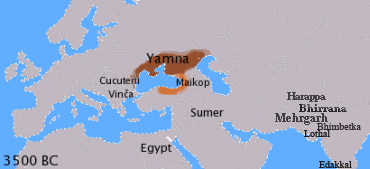 Indo-European languages ca. 3500 BC 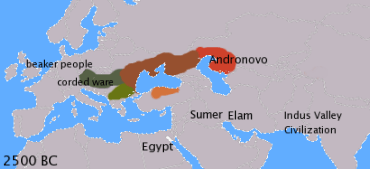 Indo-European languages ca. 2500 BC 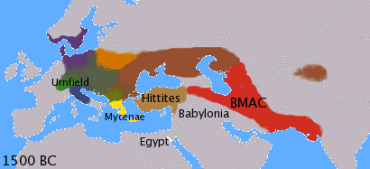 Indo-European languages ca. 1500 BC  Indo-European languages ca. 500 BC 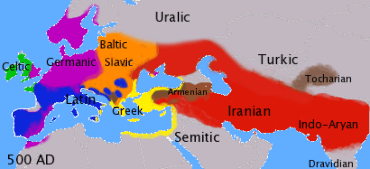 Indo-European languages ca. 500 AD |
| Indo-Aryan migration |
|---|
 The Yamna culture 3500-2000 BC.  Scheme of Indo-European migrations from ca. 4000 to 1000 BCE according to the Kurgan hypothesis. The magenta area corresponds to the assumed Urheimat (Samara culture, Sredny Stog culture). The red area corresponds to the area which may have been settled by Indo-European-speaking peoples up to ca. 2500 BCE; the orange area to 1000 BCE. (Christopher I. Beckwith (2009), Empires of the Silk Road, Oxford University Press, p.30)  Map of the approximate maximal extent of the Andronovo culture. The formative Sintashta-Petrovka culture is shown in darker red. The location of the earliest spoke-wheeled chariot finds is indicated in purple. Adjacent and overlapping cultures (Afanasevo culture, Srubna culture, BMAC) are shown in green. 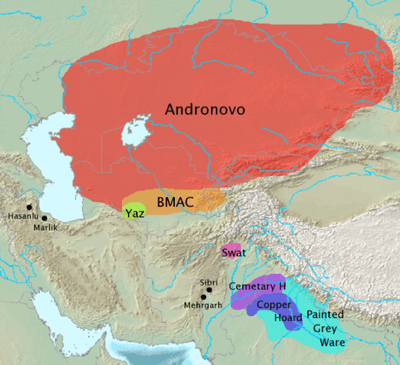 Archaeological cultures associated with Indo-Iranian migrations (after EIEC). The Andronovo, BMAC and Yaz cultures have often been associated with Indo-Iranian migrations. The GGC, Cemetery H, Copper Hoard and PGW cultures are candidates for cultures associated with Indo-Aryan movements. .png) Early Vedic Period. |
The Vedic period is named after the Indo-Aryan culture of north-west India, although other parts of India had a distinct cultural identity during this period. The Vedic culture is described in the texts of Vedas, still sacred to Hindus, which were orally composed in Vedic Sanskrit. The Vedas are some of the oldest extant texts in India.[61] The Vedic period, lasting from about 1750 to 500 BCE,[62][63] contributed the foundations of several cultural aspects of the Indian subcontinent. In terms of culture, many regions of the subcontinent transitioned from the Chalcolithic to the Iron Age in this period.[64]
Vedic society
.png)
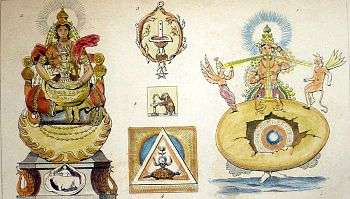
Historians have analysed the Vedas to posit a Vedic culture in the Punjab region and the upper Gangetic Plain.[64] Most historians also consider this period to have encompassed several waves of Indo-Aryan migration into the subcontinent from the north-west.[65][66] The peepal tree and cow were sanctified by the time of the Atharva Veda.[67] Many of the concepts of Indian philosophy espoused later like Dharma, Karma etc. trace their root to the Vedas.[68]
Early Vedic society is described in the Rigveda, the oldest Vedic text, believed to have been compiled during 2nd millennium BCE,[69][70] in the northwestern region of the Indian subcontinent.[71] At this time, Aryan society consisted of largely tribal and pastoral groups, distinct from the Harappan urbanisation which had been abandoned.[72] The early Indo-Aryan presence probably corresponds, in part, to the Ochre Coloured Pottery culture in archaeological contexts.[73][74]
At the end of the Rigvedic period, the Aryan society began to expand from the northwestern region of the Indian subcontinent, into the western Ganges plain. It became increasingly agricultural and was socially organised around the hierarchy of the four varnas, or social classes. This social structure was characterised both by syncretising with the native cultures of northern India,[75] but also eventually by the excluding of indigenous peoples by labelling their occupations impure.[76] During this period, many of the previous small tribal units and chiefdoms began to coalesce into monarchical, state-level polities.[77]
Sanskritisation
Since Vedic times,[78][note 2] "people from many strata of society throughout the subcontinent tended to adapt their religious and social life to Brahmanic norms", a process sometimes called Sanskritisation.[78] It is reflected in the tendency to identify local deities with the gods of the Sanskrit texts.[78]
The Kuru kingdom was the first state-level society of the Vedic period, corresponding to the beginning of the Iron Age in northwestern India, around 1200 – 800 BCE,[79] as well as with the composition of the Atharvaveda (the first Indian text to mention iron, as śyāma ayas, literally "black metal").[80] The Kuru state organised the Vedic hymns into collections, and developed the orthodox srauta ritual to uphold the social order.[81] When the Kuru kingdom declined, the centre of Vedic culture shifted to their eastern neighbours, the Panchala kingdom.[81] The archaeological Painted Grey Ware culture, which flourished in the Haryana and western Uttar Pradesh regions of northern India from about 1100 to 600 BCE,[73] is believed to correspond to the Kuru and Panchala kingdoms.[81][82]
During the Late Vedic Period, the kingdom of Videha emerged as a new centre of Vedic culture, situated even farther to the East (in what is today Nepal and Bihar state in India).[74] The later part of this period corresponds with a consolidation of increasingly large states and kingdoms, called mahajanapadas, all across Northern India.
Sanskrit Epics

In addition to the Vedas, the principal texts of Hinduism, the core themes of the Sanskrit epics Ramayana and Mahabharata are said to have their ultimate origins during this period.[83] The Mahabharata remains, today, the longest single poem in the world.[84] Historians formerly postulated an "epic age" as the milieu of these two epic poems, but now recognise that the texts (which are both familiar with each other) went through multiple stages of development over centuries. For instance, the Mahabharata may have been based on a small-scale conflict (possibly about 1000 BCE) which was eventually "transformed into a gigantic epic war by bards and poets". There is no conclusive proof from archaeology as to whether the specific events of the Mahabharat have any historical basis.[85] The existing texts of these epics are believed to belong to the post-Vedic age, between c. 400 BCE and 400 CE.[85][86] Some even attempted to date the events using methods of archaeoastronomy which have produced, depending on which passages are chosen and how they are interpreted, estimated dates ranging up to mid 2nd millennium BCE.[87][88]
"Second urbanisation" (c. 600 BCE–200 BCE)
During the time between 800 and 200 BCE the Shramana-movement formed, from which originated Jainism and Buddhism. In the same period the first Upanishads were written. After 500 BCE, the so-called "Second urbanisation" started, with new urban settlements arising at the Ganges plain, especially the Central Ganges plain.[89] The Central Ganges Plain, where Magadha gained prominence, forming the base of the Mauryan Empire, was a distinct cultural area,[90] with new states arising after 500 BC[web 1] during the so-called "Second urbanisation".[91][note 3] It was influenced by the Vedic culture,[92] but differed markedly from the Kuru-Panchala region.[90] It "was the area of the earliest known cultivation of rice in South Asia and by 1800 BC was the location of an advanced neolithic population associated with the sites of Chirand and Chechar".[93] In this region the Shramanic movements flourished, and Jainism and Buddhism originated.[89]
Mahajanapadas
.png)
In the later Vedic Age, a number of small kingdoms or city states had covered the subcontinent, many mentioned in Vedic, early Buddhist and Jaina literature as far back as 500 BCE. sixteen monarchies and "republics" known as the Mahajanapadas—Kashi, Kosala, Anga, Magadha, Vajji (or Vriji), Malla, Chedi, Vatsa (or Vamsa), Kuru, Panchala, Matsya (or Machcha), Shurasena, Assaka, Avanti, Gandhara, and Kamboja—stretched across the Indo-Gangetic Plain from modern-day Afghanistan to Bengal and Maharashtra. This period saw the second major rise of urbanism in India after the Indus Valley Civilisation.[94]
Many smaller clans mentioned within early literature seem to have been present across the rest of the subcontinent. Some of these kings were hereditary; other states elected their rulers. Early "republics" such as the Vajji (or Vriji) confederation centred in the city of Vaishali, existed as early as the 6th century BCE and persisted in some areas until the 4th century CE. The educated speech at that time was Sanskrit, while the languages of the general population of northern India are referred to as Prakrits. Many of the sixteen kingdoms had coalesced to four major ones by 500/400 BCE, by the time of Gautama Buddha. These four were Vatsa, Avanti, Kosala, and Magadha. The Life of Gautam Budhha was mainly associated with these four kingdoms.[94]
This period corresponds in an archaeological context to the Northern Black Polished Ware culture.
Upanishads and Shramana movements
The 7th and 6th centuries BC witnessed the composition of the earliest Upanishads.[95][96] Upanishads form the theoretical basis of classical Hinduism and are known as Vedanta (conclusion of the Vedas).[97] The older Upanishads launched attacks of increasing intensity on the ritual. Anyone who worships a divinity other than the Self is called a domestic animal of the gods in the Brihadaranyaka Upanishad. The Mundaka launches the most scathing attack on the ritual by comparing those who value sacrifice with an unsafe boat that is endlessly overtaken by old age and death.[98]
Increasing urbanisation of India in 7th and 6th centuries BCE led to the rise of new ascetic or shramana movements which challenged the orthodoxy of rituals.[95] Mahavira (c. 549–477 BC), proponent of Jainism, and Gautama Buddha (c. 563-483), founder of Buddhism were the most prominent icons of this movement. Shramana gave rise to the concept of the cycle of birth and death, the concept of samsara, and the concept of liberation.[99] Buddha found a Middle Way that ameliorated the extreme asceticism found in the Sramana religions.[100]
Around the same time, Mahavira (the 24th Tirthankara in Jainism) propagated a theology that was to later become Jainism.[101] However, Jain orthodoxy believes the teachings of the Tirthankaras predates all known time and scholars believe Parshvanath, accorded status as the 23rd Tirthankara, was a historical figure. Rishabhdeo was the 1st Tirthankara. The Vedas are believed to have documented a few Tirthankaras and an ascetic order similar to the shramana movement.[102]
Magadha dynasties
.png)
Magadha (Sanskrit: मगध) formed one of the sixteen Mahā-Janapadas (Sanskrit: "Great Countries") or kingdoms in ancient India. The core of the kingdom was the area of Bihar south of the Ganges; its first capital was Rajagriha (modern Rajgir) then Pataliputra (modern Patna). Magadha expanded to include most of Bihar and Bengal with the conquest of Licchavi and Anga respectively,[103] followed by much of eastern Uttar Pradesh and Orissa. The ancient kingdom of Magadha is heavily mentioned in Jain and Buddhist texts. It is also mentioned in the Ramayana, Mahabharata, Puranas.[104] The earliest reference to the Magadha people occurs in the Atharva-Veda where they are found listed along with the Angas, Gandharis, and Mujavats. Magadha played an important role in the development of Jainism and Buddhism, and two of India's greatest empires, the Maurya Empire and Gupta Empire, originated from Magadha. These empires saw advancements in ancient India's science, mathematics, astronomy, religion, and philosophy and were considered the Indian "Golden Age". The Magadha kingdom included republican communities such as the community of Rajakumara. Villages had their own assemblies under their local chiefs called Gramakas. Their administrations were divided into executive, judicial, and military functions.
Early sources, from the Buddhist Pāli Canon, the Jain Agamas and the Hindu Puranas, mentions Magadha being ruled by the Haryanka dynasty for some 200 years, c. 600 BCE – 413 BCE. The Hindu epic Mahabharata calls Brihadratha the first ruler of Magadha. King Bimbisara of the Haryanka dynasty led an active and expansive policy, conquering Anga in what is now West Bengal. The death of King Bimbisara was at the hands of his son, Prince Ajatashatru. King Pasenadi, ruler of neighbouring Kosala and brother-in-law of King Bimbisara, promptly retook the gift of the Kashi province.
During this period, Gautama Buddha, the founder of Buddhism, lived much of his life in Magadha kingdom. He attained enlightenment in Bodh Gaya, gave his first sermon in Sarnath and the first Buddhist council was held in Rajgriha.[105]
The Haryanka dynasty was overthrown by the Shishunaga dynasty. The last Shishunaga ruler, Kalasoka, was assassinated by Mahapadma Nanda in 345 BCE, the first of the so-called Nine Nandas, Mahapadma and his eight sons.
Persian and Greek conquests in Northwestern South Asia

In 530 BC Cyrus the Great, King of the Persian Achaemenid Empire crossed the Hindu-Kush mountains to seek tribute from the tribes of Kamboja, Gandhara and the trans-India region (modern Afghanistan and Pakistan).[106] By 520 BC, during the reign of Darius I of Persia, much of the northwestern subcontinent (present-day eastern Afghanistan and Pakistan) came under the rule of the Persian Achaemenid Empire, as part of the far easternmost territories. The area remained under Persian control for two centuries.[107] During this time India supplied mercenaries to the Persian army then fighting in Greece.[106]
Under Persian rule the famous city of Takshashila became a centre where both Vedic and Iranian learning were mingled.[108] Persian ascendency in Northwestern South Asia ended with Alexander the Great's conquest of Persia in 327 BC.[109]
By 326 BC, Alexander the Great had conquered Asia Minor and the Achaemenid Empire and had reached the northwest frontiers of the Indian subcontinent. There he defeated King Porus in the Battle of the Hydaspes (near modern-day Jhelum, Pakistan) and conquered much of the Punjab.[110] Alexander's march east put him in confrontation with the Nanda Empire of Magadha and the Gangaridai of Bengal. His army, exhausted and frightened by the prospect of facing larger Indian armies at the Ganges River, mutinied at the Hyphasis (modern Beas River) and refused to march further East. Alexander, after the meeting with his officer, Coenus, and after learning about the might of the Nanda Empire, was convinced that it was better to return.
The Persian and Greek invasions had repercussions in the Northwestern regions of the Indian subcontinent. The region of Gandhara, or present-day eastern Afghanistan and northwest Pakistan, became a melting pot of Indian, Persian, Central Asian, and Greek cultures and gave rise to a hybrid culture, Greco-Buddhism, which lasted until the 5th century AD and influenced the artistic development of Mahayana Buddhism.
Maurya Empire


The Maurya Empire (322–185 BCE) was the first empire to unify India into one state, and was the largest on the Indian subcontinent. At its greatest extent, the Mauryan Empire stretched to the north up to the natural boundaries of the Himalayas and to the east into what is now Assam. To the west, it reached beyond modern Pakistan, to the Hindu Kush mountains in what is now Afghanistan. The empire was established by Chandragupta Maurya assisted by Chanakya (Kautilya) in Magadha (in modern Bihar) when he overthrew the Nanda Dynasty.[111] Chandragupta's son Bindusara succeeded to the throne around 297 BC. By the time he died in c. 272 BC, a large part of the subcontinent was under Mauryan suzerainty. However, the region of Kalinga (around modern day Odisha) remained outside Mauryan control, perhaps interfering with their trade with the south.[112]
Bindusara was succeeded by Ashoka, whose reign lasted for around thirty seven years until his death in about 232 BCE.[113] His campaign against the Kalingans in about 260 BCE, though successful, lead to immense loss of life and misery. This filled Ashoka with remorse and lead him to shun violence, and subsequently to embrace Buddhism.[112] The empire began to decline after his death and the last Mauryan ruler, Brihadratha, was assassinated by Pushyamitra Shunga to establish the Shunga Empire.[113]
The Arthashastra and the Edicts of Ashoka are the primary written records of the Mauryan times. Archaeologically, this period falls into the era of Northern Black Polished Ware (NBPW). The Mauryan Empire was based on a modern and efficient economy and society. However, the sale of merchandise was closely regulated by the government.[114] Although there was no banking in the Mauryan society, usury was customary. A significant amount of written records on slavery are found, suggesting a prevalence thereof.[115] During this period, a high quality steel called Wootz steel was developed in south India and was later exported to China and Arabia.[13]
Sangam Period
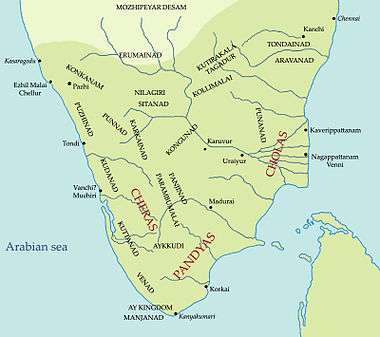
During the Sangam period Tamil literature flourished from the 3rd century BCE to the 4th century CE. During this period, three Tamil Dynasties, collectively known as the Three Crowned Kings of Tamilakam: Chera dynasty, Chola dynasty and the Pandyan dynasty ruled parts of southern India.[116]
The Sangam literature deals with the history, politics, wars and culture of the Tamil people of this period.[117] The scholars of the Sangam period rose from among the common people who sought the patronage of the Tamil Kings, but who mainly wrote about the common people and their concerns.[118] Unlike Sanskrit writers who were mostly Brahmins, Sangam writers came from diverse classes and social backgrounds and were mostly non-Brahmins. They belonged to different faiths and professions like farmers, artisans, merchants, monks, priests and even princes and quite few of them were even women.[118]
Classical period (c. 200 BCE–1200 CE)
The time between 200 BCE and ca. 1100 CE is the "Classical Age" of India. It can be divided in various sub-periods, depending on the chosen periodisation. Classical period begins after the decline of the Maurya Empire, and the corresponding rise of the Satavahana dynasty, beginning with Simuka, from 230 BCE. The Gupta Empire (4th–6th century) is regarded as the "Golden Age" of Hinduism, although a host of kingdoms ruled over India in these centuries. Also, the Sangam literature flourished from the 3rd century BCE to the 3rd century CE in southern India.[12] During this period, India is estimated to have had the largest economy in the world; controlling between one third and one fourth of the world's wealth.[119][120]
Early Classical period (c. 200 BCE–320 CE)
Satavahana Dynasty
The Śātavāhana Empire was a royal Indian dynasty based from Amaravati in Andhra Pradesh as well as Junnar (Pune) and Prathisthan (Paithan) in Maharashtra. The territory of the empire covered much of India from 230 BCE onward. Sātavāhanas started out as feudatories to the Mauryan dynasty, but declared independence with its decline. They are known for their patronage of Hinduism and Buddhism which resulted in Buddhist monuments from Ellora (a UNESCO World Heritage Site) to Amaravati. The Sātavāhanas were one of the first Indian states to issue coins struck with their rulers embossed. They formed a cultural bridge and played a vital role in trade as well as the transfer of ideas and culture to and from the Indo-Gangetic Plain to the southern tip of India. They had to compete with the Shunga Empire and then the Kanva dynasty of Magadha to establish their rule. Later, they played a crucial role to protect a huge part of India against foreign invaders like the Sakas, Yavanas and Pahlavas. In particular their struggles with the Western Kshatrapas went on for a long time. The notable rulers of the Satavahana Dynasty Gautamiputra Satakarni and Sri Yajna Sātakarni were able to defeat the foreign invaders like the Western Kshatrapas and to stop their expansion. In the 3rd century CE the empire was split into smaller states.
Shunga Empire
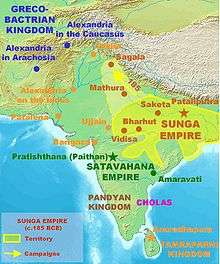
The Shunga Empire was an ancient Indian dynasty from Magadha that controlled vast areas of the Indian subcontinent from around 187 to 78 BCE. The dynasty was established by Pushyamitra Shunga, after the fall of the Maurya Empire. Its capital was Pataliputra, but later emperors such as Bhagabhadra also held court at Besnagar, modern Vidisha in Eastern Malwa.[121] Pushyamitra Shunga ruled for 36 years and was succeeded by his son Agnimitra. There were ten Shunga rulers. The empire is noted for its numerous wars with both foreign and indigenous powers. They fought battles with the Kalingas, Satavahanas, the Indo-Greeks, and possibly the Panchalas and Mathuras. Art, education, philosophy, and other forms of learning flowered during this period including small terracotta images, larger stone sculptures, and architectural monuments such as the Stupa at Bharhut, and the renowned Great Stupa at Sanchi. The Shunga rulers helped to establish the tradition of royal sponsorship of learning and art. The script used by the empire was a variant of Brahmi and was used to write the Sanskrit language. The Shunga Empire played an imperative role in patronising Indian culture at a time when some of the most important developments in Hindu thought were taking place. This helped the empire flourish and gain power.
Mahameghavahana Empire
Mahameghavahana dynasty, under Emperor Kharavela, the warrior ruler of Kalinga,[122] ruled a vast empire and was responsible for the propagation of Jainism in the Indian subcontinent.[122]
Kaḷingan military might was reinstated by Khārabēḷa: under Khārabēḷa's generalship, the Kaḷinga state had a formidable maritime reach with trade routes linking it to the then-Simhala (Sri Lanka), Burma (Myanmar), Siam (Thailand), Vietnam, Kamboja (Cambodia), Malaysia, Borneo, Bali, Samudra (Sumatra) and Jabadwipa (Java). Khārabēḷa led many successful campaigns against the states of Magadha, Anga, Satavahanas till the southern most regions of Pandyan Empire (modern Tamil Nadu).
The empire was a maritime power with trading routes linking it to Sri Lanka, Burma, Thailand, Vietnam, Cambodia, Borneo, Bali, Sumatra, and Java. Colonists from Kalinga settled in Sri Lanka, Burma, as well as the Maldives and Maritime Southeast Asia.
Northwestern kingdoms and hybrid cultures
The Northwestern kingdoms and hybrid cultures of the Indian subcontinent included the Indo-Greeks, the Indo-Scythians, the Indo-Parthians, and the Indo-Sassinids.
- Indo-Greek Kingdom: The Indo-Greek Menander I (reigned 155–130 BCE) drove the Greco-Bactrians out of Gandhara and beyond the Hindu Kush, becoming a king shortly after his victory. His territories covered Panjshir and Kapisa in modern Afghanistan and extended to the Punjab region, with many tributaries to the south and east. The capital Sagala (modern Sialkot) prospered greatly under Menander's rule.[123] The classical Buddhist text Milinda Pañha praises Menander, saying there was "none equal to Milinda in all India".[124] Lasting for almost two centuries, the kingdom was ruled by a succession of more than 30 Indo-Greek kings, who were often in conflict with each other.
- Indo-Scythian Kingdom: The Indo-Scythians were descended from the Sakas (Scythians) who migrated from southern Siberia to Pakistan and Arachosia to India from the middle of the 2nd century BCE to the 1st century BCE. They displaced the Indo-Greeks and ruled a kingdom that stretched from Gandhara to Mathura. The power of the Saka rulers started to decline in the 2nd century CE after the Scythians were defeated by the south Indian Emperor Gautamiputra Satakarni of the Satavahana dynasty.[125][126] Later the Saka kingdom was completely destroyed by Chandragupta II of the Gupta Empire from eastern India in the 4th century.[127]
- Indo-Parthian Kingdom: The Indo-Parthian Kingdom was ruled by the Gondopharid dynasty, named after its eponymous first ruler Gondophares. They ruled parts of present-day Afghanistan, Pakistan, and northwestern India,[128] during or slightly before the 1st century AD. For most of their history, the leading Gondopharid kings held Taxila (in the present Punjab province of Pakistan) as their residence and ruled from there, but during their last few years of existence the capital shifted between Kabul and Peshawar. These kings have traditionally been referred to as Indo-Parthians, as their coinage was often inspired by the Arsacid dynasty, but they probably belonged to a wider groups of Iranian tribes who lived east of Parthia proper, and there is no evidence that all the kings who assumed the title Gondophares, which means "Holder of Glory", were even related.
- Indo-Sassanid Kingdom: The Sassanid empire of Persia, who was contemporaneous with the Gupta Empire, expanded into the region of present-day Balochistan in Pakistan, where the mingling of Indian culture and the culture of Iran gave birth to a hybrid culture under the Indo-Sassanids.
Trade and Travels to India

The spice trade in Kerala attracted traders from all over the Old World to India. Early writings and Stone Age carvings of neolithic age obtained indicates that India's Southwest coastal port Muziris, in Kerala, had established itself as a major spice trade centre from as early as 3,000 BCE, according to Sumerian records. Kerala was referred to as the land of spices or as the "Spice Garden of India". It was the place traders and exporters wanted to reach, including Christopher Colombus, Vasco da Gama, and others.[129]
Buddhism entered China through the Silk Road transmission of Buddhism in the 1st or 2nd century CE. The interaction of cultures resulted in several Chinese travellers and monks to enter India. Most notable were Faxian, Yijing, Song Yun and Xuanzang. These travellers wrote detailed accounts of the Indian Subcontinent, which includes the political and social aspects of the region.[130]
Hindu and Buddhist religious establishments of Southeast Asia came to be associated with the economic activity and commerce as patrons entrust large funds which would later be used to benefit local economy by estate management, craftsmanship, promotion of trading activities. Buddhism in particular, travelled alongside the maritime trade, promoting coinage, art and literacy.[131] Indian merchants involved in spice trade took Indian cuisine to Southeast Asia, where spice mixtures and curries became popular with the native inhabitants.[132]
The Greco-Roman world followed by trading along the incense route and the Roman-India routes.[133] During the first millennium, the sea routes to India were controlled by the Indians and Ethiopians that became the maritime trading power of the Red Sea.
According to Poseidonius, later reported in Strabo's Geography,[134] the monsoon wind system of the Indian Ocean was first sailed by Eudoxus of Cyzicus in 118 or 116 BC. Poseidonius said a shipwrecked sailor from India had been rescued in the Red Sea and taken to Ptolemy VIII in Alexandria.
Strabo, whose Geography is the main surviving source of the story, was sceptical about its truth. Modern scholarship tends to consider it relatively credible. During the 2nd century BC Greek and Indian ships met to trade at Arabian ports such as Aden (called Eudaemon by the Greeks).[135] Another Greek navigator, Hippalus, is sometimes credited with discovering the monsoon wind route to India. He is sometimes conjectured to have been part of Eudoxus's expeditions.[136]
Kushan Empire

The Kushan Empire expanded out of what is now Afghanistan into the northwest of the subcontinent under the leadership of their first emperor, Kujula Kadphises, about the middle of the 1st century CE. They came of an Indo-European language speaking Central Asian tribe called the Yuezhi,[137][138] a branch of which was known as the Kushans. By the time of his grandson, Kanishka the Great, the empire spread to encompass much of Afghanistan,[139] and then the northern parts of the Indian subcontinent at least as far as Saketa and Sarnath near Varanasi (Benares).[140]
Emperor Kanishka was a great patron of Buddhism; however, as Kushans expanded southward, the deities[141] of their later coinage came to reflect its new Hindu majority.[142]
They played an important role in the establishment of Buddhism in India and its spread to Central Asia and China.
Historian Vincent Smith said about Kanishka:
He played the part of a second Ashoka in the history of Buddhism.[143]
The empire linked the Indian Ocean maritime trade with the commerce of the Silk Road through the Indus valley, encouraging long-distance trade, particularly between China and Rome. The Kushans brought new trends to the budding and blossoming Gandhara Art, which reached its peak during Kushan Rule.
H.G. Rowlinson commented:
The Kushan period is a fitting prelude to the Age of the Guptas.[144]
By the 3rd century, their empire in India was disintegrating and their last known great emperor was Vasudeva I.[145][146]
Classical period (c. 320-650 CE)
Gupta Empire - Golden Age


Classical India refers to the period when much of the Indian subcontinent was reunited under the Gupta Empire (c. 320–550 CE).[147][148] This period has been called the Golden Age of India[149] and was marked by extensive achievements in science, technology, engineering, art, dialectic, literature, logic, mathematics, astronomy, religion, and philosophy that crystallised the elements of what is generally known as Hindu culture.[150] The Hindu-Arabic numerals, a positional numeral system, originated in India and was later transmitted to the West through the Arabs. Early Hindu numerals had only nine symbols, until 600 to 800 CE, when a symbol for zero was developed for the numeral system.[151] The peace and prosperity created under leadership of Guptas enabled the pursuit of scientific and artistic endeavours in India.[152]
The high points of this cultural creativity are magnificent architecture, sculpture, and painting.[153] The Gupta period produced scholars such as Kalidasa, Aryabhata, Varahamihira, Vishnu Sharma, and Vatsyayana who made great advancements in many academic fields.[154] The Gupta period marked a watershed of Indian culture: the Guptas performed Vedic sacrifices to legitimise their rule, but they also patronised Buddhism, which continued to provide an alternative to Brahmanical orthodoxy. The military exploits of the first three rulers – Chandragupta I, Samudragupta, and Chandragupta II - brought much of India under their leadership.[155] Science and political administration reached new heights during the Gupta era. Strong trade ties also made the region an important cultural centre and established it as a base that would influence nearby kingdoms and regions in Burma, Sri Lanka, Maritime Southeast Asia, and Indochina.
Historian Dr. Barnett remarked:
The Gupta period is in the annals of classical India almost what the Periclean age is in the history of Greece.[156]
However, some historians like D.N.Jha disagree:
The much published Hindu renaissance was, in reality, not a renaissance, much less a Hindu one.[157]
The latter Guptas successfully resisted the northwestern kingdoms until the arrival of the Hunas, who established themselves in Afghanistan by the first half of the 5th century, with their capital at Bamiyan.[158] However, much of the Deccan and southern India were largely unaffected by these events in the north.[159][160]
Vakataka Dynasty
.jpg)
The Vākāṭaka Empire (Marathi: वाकाटक) was a royal Indian dynasty that originated from the Deccan in the mid-third century CE. Their state is believed to have extended from the southern edges of Malwa and Gujarat in the north to the Tungabhadra River in the south as well as from the Arabian Sea in the western to the edges of Chhattisgarh in the east. They were the most important successors of the Satavahanas in the Deccan and contemporaneous with the Guptas in northern India.
The Vakatakas are noted for having been patrons of the arts, architecture and literature. They led public works and their monuments are a visible legacy. The rock-cut Buddhist viharas and chaityas of Ajanta Caves (a UNESCO World Heritage Site) were built under the patronage of Vakataka emperor, Harishena.[161][162]
Kamarupa Kingdom
Samudragupta's 4th century Allahabad pillar inscription mentions Kamarupa (Western Assam)[163] and Davaka (Central Assam)[164] as frontier kingdoms of the Gupta Empire.
Davaka was later absorbed by Kamarupa, which grew into a large kingdom that spanned from Karatoya river to near present Sadiya and covered the entire Brahmaputra valley, North Bengal, parts of Bangladesh and, at times Purnea and parts of West Bengal.[165]
Ruled by three dynasties Varmanas (c. 350–650 CE), Mlechchha dynasty (c.655–900 CE) and Kamarupa-Palas (c. 900–1100 CE), from their capitals in present-day Guwahati (Pragjyotishpura), Tezpur (Haruppeswara) and North Gauhati (Durjaya) respectively. Country was 10,000 li (6000 km) in circuit and capital city Pragjyotishpura was about 30 li (18 km). All three dynasties claimed their descent from Narakasura, an immigrant from Aryavarta.[166]
In the reign of the Varman king, Bhaskar Varman (c. 600–650 AD), the Chinese traveller Xuanzang visited the region and recorded his travels. Later, after weakening and disintegration (after the Kamarupa-Palas), the Kamarupa tradition was somewhat extended till c. 1255 AD by the Lunar I (c. 1120–1185 AD) and Lunar II (c. 1155–1255 AD) dynasties.[167]
Pallava Dynasty

The Pallavas, during the 4th to 9th centuries were, alongside the Guptas of the North, great patronisers of Sanskrit development in the South of the Indian subcontinent. The Pallava reign saw the first Sankrit inscriptions in a script called Grantha.[168] Early Pallavas had different connexions to Southeast Asian countries. The Pallavas used Dravidian architecture to build some very important Hindu temples and academies in Mamallapuram, Kanchipuram and other places; their rule saw the rise of great poets. The practice of dedicating temples to different deities came into vogue followed by fine artistic temple architecture and sculpture style of Vastu Shastra.[169]
Pallavas reached the height of power during the reign of Mahendravarman I (571 – 630 CE) and Narasimhavarman I (630 – 668 CE) and dominated the Telugu and northern parts of the Tamil region for about six hundred years until the end of the 9th century.[170]
Kadamba Dynasty
Kadamba (345 – 525 CE) was an ancient royal dynasty of Karnataka, India that ruled northern Karnataka and the Konkan from Banavasi in present-day Uttara Kannada district. At the peak of their power under King Kakushtavarma, the Kadambas of Banavasi ruled large parts of modern Karnataka state.
The dynasty was founded by Mayurasharma in 345 CE which at later times showed the potential of developing into imperial proportions, an indication to which is provided by the titles and epithets assumed by its rulers. King Mayurasharma defeated the armies of Pallavas of Kanchi possibly with help of some native tribes. The Kadamba fame reached its peak during the rule of Kakusthavarma, a notable ruler with whom even the kings of Gupta Dynasty of northern India cultivated marital alliances. The Kadambas were contemporaries of the Western Ganga Dynasty and together they formed the earliest native kingdoms to rule the land with absolute autonomy. The dynasty later continued to rule as a feudatory of larger Kannada empires, the Chalukya and the Rashtrakuta empires, for over five hundred years during which time they branched into minor dynasties known as the Kadambas of Goa, Kadambas of Halasi and Kadambas of Hangal.
The White Huns
The Hephthalites (or Ephthalites), also known as the White Huns, were a nomadic confederation in Central Asia during the late antiquity period. The White Huns established themselves in modern-day Afghanistan by the first half of the 5th century. Led by the Hun military leader Toramana, they overran the northern region of Pakistan and North India. Toramana's son Mihirakula, a Saivite Hindu, moved up to near Pataliputra to the east and Gwalior to the central India. Hiuen Tsiang narrates Mihirakula's merciless persecution of Buddhists and destruction of monasteries, though the description is disputed as far as the authenticity is concerned.[171] The Huns were defeated by the Indian kings Yasodharman of Malwa and Narasimhagupta in the 6th century. Some of them were driven out of India and others were assimilated in the Indian society.[172]
Empire of Harsha
Harsha Vardhana (Sanskrit: हर्षवर्धन) (c. 590–647), commonly called Harsha, was an Indian emperor who ruled northern India from 606 to 647 from his capital Kannauj. He was the son of Prabhakarvardhana and the younger brother of Rajyavardhana, a king of Thanesar in present-day Haryana. At the height of his power his kingdom spanned the Punjab, Rajasthan, Gujarat, Bengal, Odisha and the entire Indo-Gangetic plain north of the Narmada River.
After the downfall of the prior Gupta Empire in the middle of the 6th century, North India reverted to small republics and small monarchical states ruled by Gupta rulers. Harsha was a convert to Buddhism.[173] He united the small republics from Punjab to central India, and their representatives crowned Harsha king at an assembly in April 606 giving him the title of Maharaja when he was merely 16 years old. Harsha belonged to Kanojia.[174] He brought all of northern India under his control.[175] The peace and prosperity that prevailed made his court a centre of cosmopolitanism, attracting scholars, artists and religious visitors from far and wide.[175] The Chinese traveller Xuan Zang visited the court of Harsha and wrote a very favourable account of him, praising his justice and generosity.[175]
Late Classical period (c. 650–1200 CE)
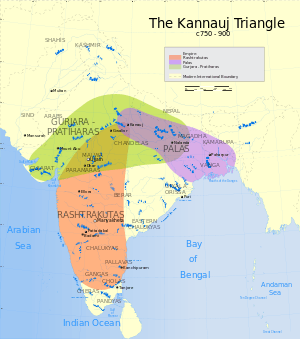

The "Late Classical Age"[176] in India began after the end of the Gupta Empire[176] and the collapse of the Empire of Harsha in the 7th century CE,[176] the beginning of Imperial Kannauj, leading to the Tripartite struggle; and ended in the 13th century with the rise of the Delhi Sultanate in Northern India[177] and the end of the Later Cholas with the death of Rajendra Chola III in 1279 in Southern India; however some aspects of the Classical period continued until the fall of the Vijayanagara Empire in the south around the 17th century.
From the fifth century to the thirteenth, Śrauta sacrifices declined, and initiatory traditions of Buddhism, Jainism or more commonly Shaivism, Vaishnavism and Shaktism expanded in royal courts.[3] This period produced some of India's finest art, considered the epitome of classical development, and the development of the main spiritual and philosophical systems which continued to be in Hinduism, Buddhism and Jainism.
North-Western Indian Buddhism weakened in the 6th century after the White Hun invasion, who followed their own religions at the beginning such as Tengri, but later Indian religions. Muhammad bin Qasim's invasion of Sindh (modern Pakistan) in 711 CE witnessed further decline of Buddhism. The Chach Nama records many instances of conversion of stupas to mosques such as at Nerun.[178]
In the 7th century CE, Kumārila Bhaṭṭa formulated his school of Mimamsa philosophy and defended the position on Vedic rituals against Buddhist attacks. Scholars note Bhaṭṭa's contribution to the decline of Buddhism in India.[179] His dialectical success against the Buddhists is confirmed by Buddhist historian Tathagata, who reports that Kumārila defeated disciples of Buddhapalkita, Bhavya, Dharmadasa, Dignaga and others.[180]
In the 8th century, Adi Shankara travelled across the Indian subcontinent to propagate and spread the doctrine of Advaita Vedanta, which he consolidated; and is credited with unifying the main characteristics of the current thoughts in Hinduism.[181][182][183] He was a critic of both Buddhism and Minamsa school of Hinduism;[184][185][186][187] and founded mathas (monasteries), in the four corners of the Indian subcontinent for the spread and development of Advaita Vedanta.[188]
Ronald Inden writes that by the 8th century CE symbols of Hindu gods "replaced the Buddha at the imperial centre and pinnacle of the cosmo-political system, the image or symbol of the Hindu god comes to be housed in a monumental temple and given increasingly elaborate imperial-style puja worship".[189] Although Buddhism did not disappear from India for several centuries after the eighth, royal proclivities for the cults of Vishnu and Shiva weakened Buddhism's position within the sociopolitical context and helped make possible its decline.[190]
Emperor Harsha of Kannauj succeeded in reuniting northern India during his reign in the 7th century, after the collapse of the Gupta dynasty. His empire collapsed after his death.
From the 8th to the 10th century, three dynasties contested for control of northern India: the Gurjara Pratiharas of Malwa, the Palas of Bengal, and the Rashtrakutas of the Deccan. The Sena dynasty would later assume control of the Pala Empire, and the Gurjara Pratiharas fragmented into various states. These were the first of the Rajput states. The first recorded Rajput kingdoms emerged in Rajasthan in the 6th century, and small Rajput dynasties later ruled much of northern India. One Gurjar[191][192] Rajput of the Chauhan clan, Prithvi Raj Chauhan, was known for bloody conflicts against the advancing Turkic sultanates.
.jpg)

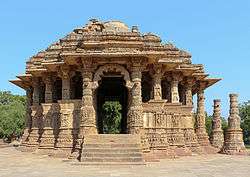
The Chola empire emerged as a major power during the reign of Raja Raja Chola I and Rajendra Chola I who successfully invaded parts of Southeast Asia and Sri Lanka in the 11th century.[193] Lalitaditya Muktapida (r. 724 CE–760 CE) was an emperor of the Kashmiri Karkoṭa dynasty, which exercised influence in northwestern India from 625 CE until 1003, and was followed by Lohara dynasty. Kalhana in his Rajatarangini credits king Lalitaditya with leading an aggressive military campaign in Northern India and Central Asia.[194][195][196]
The Hindu Shahi dynasty ruled portions of eastern Afghanistan, northern Pakistan, and Kashmir from the mid-7th century to the early 11th century. While in Odisha, the Eastern Ganga Empire rose to power; noted for the advancement of Hindu architecture, most notable being Jagannath Temple and Konark Sun Temple, as well as being patrons of art and literature.
Chalukya Empire

The Chalukya Empire (Kannada: ಚಾಲುಕ್ಯರು [tʃaːɭukjə]) was an Indian royal dynasty that ruled large parts of southern and central India between the 6th and the 12th centuries. During this period, they ruled as three related yet individual dynasties. The earliest dynasty, known as the "Badami Chalukyas", ruled from Vatapi (modern Badami) from the middle of the 6th century. The Badami Chalukyas began to assert their independence at the decline of the Kadamba kingdom of Banavasi and rapidly rose to prominence during the reign of Pulakeshin II. The rule of the Chalukyas marks an important milestone in the history of South India and a golden age in the history of Karnataka. The political atmosphere in South India shifted from smaller kingdoms to large empires with the ascendancy of Badami Chalukyas. A Southern India-based kingdom took control and consolidated the entire region between the Kaveri and the Narmada rivers. The rise of this empire saw the birth of efficient administration, overseas trade and commerce and the development of new style of architecture called "Chalukyan architecture". The Chalukya dynasty ruled parts of southern and central India from Badami in Karnataka between 550 and 750, and then again from Kalyani between 970 and 1190.
The Solanki dynasty of Gujarat were a branch of the Chalukyas. Their capital at Anhilwara (modern Patan, Gujarat) was one of the largest cities in Classical India, with population estimated at 100,000 in 1000 CE.
Rashtrakuta Empire
Founded by Dantidurga around 753,[197] the Rashtrakuta Empire ruled from its capital at Manyakheta for almost two centuries.[198] At its peak, the Rashtrakutas ruled from the Ganges River and Yamuna River doab in the north to Cape Comorin in the south, a fruitful time of political expansion, architectural achievements and famous literary contributions.[199][200]
The early rulers of this dynasty were Hindu, but the later rulers were strongly influenced by Jainism.[201] Govinda III and Amoghavarsha were the most famous of the long line of able administrators produced by the dynasty. Amoghavarsha, who ruled for 64 years, was also an author and wrote Kavirajamarga, the earliest known Kannada work on poetics.[198][202] Architecture reached a milestone in the Dravidian style, the finest example of which is seen in the Kailasanath Temple at Ellora. Other important contributions are the sculptures of Elephanta Caves in modern Maharashtra as well as the Kashivishvanatha temple and the Jain Narayana temple at Pattadakal in modern Karnataka, all of which are UNESCO World Heritage Sites.
The Arab traveller Suleiman described the Rashtrakuta Empire as one of the four great Empires of the world.[203] The Rashtrakuta period marked the beginning of the golden age of southern Indian mathematics. The great south Indian mathematician Mahāvīra lived in the Rashtrakuta Empire and his text had a huge impact on the medieval south Indian mathematicians who lived after him.[204] The Rashtrakuta rulers also patronised men of letters, who wrote in a variety of languages from Sanskrit to the Apabhraṃśas.[198]
Pala Empire

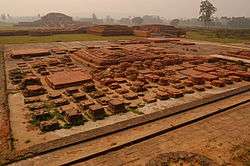
The Pala Empire (Bengali: পাল সাম্রাজ্য Pal Samrajyô) flourished during the Classical period of India, and may be dated during 750–1174 CE. Founded by Gopala I,[205][206][207] it was ruled by a Buddhist dynasty from Bengal in the eastern region of the Indian subcontinent. Though the Palas were followers of the Mahayana and Tantric schools of Buddhism,[208] they also patronised Shaivism and Vaishnavism.[209] The morpheme Pala, meaning "protector", was used as an ending for the names of all the Pala monarchs. The empire reached its peak under Dharmapala and Devapala. Dharmapala is believed to have conquered Kanauj and extended his sway up to the farthest limits of India in the northwest.[209] The Pala Empire can be considered as the golden era of Bengal in many ways.[210] Dharmapala founded the Vikramashila and revived Nalanda,[209] considered one of the first great universities in recorded history. Nalanda reached its height under the patronage of the Pala Empire.[210][211] The Palas also built many viharas. They maintained close cultural and commercial ties with countries of Southeast Asia and Tibet. Sea trade added greatly to the prosperity of the Pala kingdom. The Arab merchant Suleiman notes the enormity of the Pala army in his memoirs.[209]
Chola Empire
Medieval Cholas rose to prominence during the middle of the 9th century C.E. and established the greatest empire South India had seen.[212] They successfully united the South India under their rule and through their naval strength extended their influence in the Southeast Asian countries such as Srivijaya.[193] Under Rajaraja Chola I and his successors Rajendra Chola I, Rajadhiraja Chola, Virarajendra Chola and Kulothunga Chola I the dynasty became a military, economic and cultural power in South Asia and South-East Asia.[213][214] Rajendra Chola I's navies went even further, occupying the sea coasts from Burma to Vietnam,[215] the Andaman and Nicobar Islands, the Lakshadweep (Laccadive) islands, Sumatra, and the Malay Peninsula in Southeast Asia and the Pegu islands. The power of the new empire was proclaimed to the eastern world by the expedition to the Ganges which Rajendra Chola I undertook and by the occupation of cities of the maritime empire of Srivijaya in Southeast Asia, as well as by the repeated embassies to China.[216]
They dominated the political affairs of Sri Lanka for over two centuries through repeated invasions and occupation. They also had continuing trade contacts with the Arabs in the west and with the Chinese empire in the east.[217] Rajaraja Chola I and his equally distinguished son Rajendra Chola I gave political unity to the whole of Southern India and established the Chola Empire as a respected sea power.[218] Under the Cholas, the South India reached new heights of excellence in art, religion and literature. In all of these spheres, the Chola period marked the culmination of movements that had begun in an earlier age under the Pallavas. Monumental architecture in the form of majestic temples and sculpture in stone and bronze reached a finesse never before achieved in India.[219]
Western Chalukya Empire
_sculpture_on_vesara_tower_in_the_Kedareshvara_temple_at_Balligavi.jpg)
The Western Chalukya Empire (Kannada: ಪಶ್ಚಿಮ ಚಾಲುಕ್ಯ ಸಾಮ್ರಾಜ್ಯ) ruled most of the western Deccan, South India, between the 10th and 12th centuries.[220] Vast areas between the Narmada River in the north and Kaveri River in the south came under Chalukya control.[220] During this period the other major ruling families of the Deccan, the Hoysalas, the Seuna Yadavas of Devagiri, the Kakatiya dynasty and the Southern Kalachuris, were subordinates of the Western Chalukyas and gained their independence only when the power of the Chalukya waned during the later half of the 12th century.[221] The Western Chalukyas developed an architectural style known today as a transitional style, an architectural link between the style of the early Chalukya dynasty and that of the later Hoysala empire. Most of its monuments are in the districts bordering the Tungabhadra River in central Karnataka. Well known examples are the Kasivisvesvara Temple at Lakkundi, the Mallikarjuna Temple at Kuruvatti, the Kallesvara Temple at Bagali and the Mahadeva Temple at Itagi.[222] This was an important period in the development of fine arts in Southern India, especially in literature as the Western Chalukya kings encouraged writers in the native language of Kannada, and Sanskrit like the philosopher and statesman Basava and the great mathematician Bhāskara II.[223][224]
Early Islamic intrusions into the Indian subcontinent
The early Islamic literature indicates that the conquest of the Indian subcontinent was one of the very early ambitions of the Muslims, though it was recognised as a particularly difficult one.[225] After conquering Persia, the Arab Umayyad Caliphate incorporated parts of what are now Afghanistan and Pakistan around 720.
The book Chach Nama chronicles the Chacha Dynasty's period, following the demise of the Rai Dynasty and the ascent of Chach of Alor to the throne, down to the Arab conquest by Muhammad bin Qasim in the early 8th century AD, by defeating the last Hindu monarch of Sindh, Raja Dahir.
In 712, Arab Muslim general Muhammad bin Qasim conquered most of the Indus region in modern-day Pakistan for the Umayyad Empire, incorporating it as the "As-Sindh" province with its capital at Al-Mansurah, 72 km (45 mi) north of modern Hyderabad in Sindh, Pakistan. After several incursions, the Hindu kings east of Indus defeated the Arabs during the Caliphate campaigns in India, halting their expansion and containing them at Sindh in Pakistan. The south Indian Chalukya empire under Vikramaditya II, Nagabhata I of the Pratihara dynasty and Bappa Rawal of the Guhilot dynasty repulsed the Arab invaders in the early 8th century.[226]
Several Islamic kingdoms (sultanates) under both foreign and, newly converted, Rajput rulers were established across the Northwestern subcontinent (Afghanistan and Pakistan) over a period of a few centuries. From the 10th century, Sindh was ruled by the Rajput Soomra dynasty, and later, in the mid-13th century by the Rajput Samma dynasty. Additionally, Muslim trading communities flourished throughout coastal south India, particularly on the western coast where Muslim traders arrived in small numbers, mainly from the Arabian peninsula. This marked the introduction of a third Abrahamic Middle Eastern religion, following Judaism and Christianity, often in puritanical form. Mahmud of Ghazni in the early 11th century raided mainly the north-western parts of the Indian sub-continent 17 times, but he did not seek to establish "permanent dominion" in those areas.[227]
Hindu Shahi

The Kabul Shahi dynasties ruled the Kabul Valley and Gandhara (modern-day Pakistan and Afghanistan) from the decline of the Kushan Empire in the 3rd century to the early 9th century.[228] The Shahis are generally split up into two eras: the Buddhist Shahis and the Hindu Shahis, with the change-over thought to have occurred sometime around 870. The kingdom was known as the Kabul Shahan or Ratbelshahan from 565-670, when the capitals were located in Kapisa and Kabul, and later Udabhandapura, also known as Hund[229] for its new capital.[230][231][232]
The Hindu Shahis under Jayapala, is known for his struggles in defending his kingdom against the Ghaznavids in the modern-day eastern Afghanistan and Pakistan region. Jayapala saw a danger in the consolidation of the Ghaznavids and invaded their capital city of Ghazni both in the reign of Sebuktigin and in that of his son Mahmud, which initiated the Muslim Ghaznavid and Hindu Shahi struggles.[233] Sebuk Tigin, however, defeated him, and he was forced to pay an indemnity.[233] Jayapala defaulted on the payment and took to the battlefield once more.[233] Jayapala however, lost control of the entire region between the Kabul Valley and Indus River.[234]
Before his struggle began Jaipal had raised a large army of Punjabi Hindus. When Jaipal went to the Punjab region, his army was raised to 100,000 horsemen and an innumerable host of foot soldiers. According to Ferishta:
The two armies having met on the confines of Lumghan, Subooktugeen ascended a hill to view the forces of Jeipal, which appeared in extent like the boundless ocean, and in number like the ants or the locusts of the wilderness. But Subooktugeen considered himself as a wolf about to attack a flock of sheep: calling, therefore, his chiefs together, he encouraged them to glory, and issued to each his commands. His soldiers, though few in number, were divided into squadrons of five hundred men each, which were directed to attack successively, one particular point of the Hindoo line, so that it might continually have to encounter fresh troops.[234]
However, the army was hopeless in battle against the western forces, particularly against the young Mahmud of Ghazni.[234] In the year 1001, soon after Sultan Mahmud came to power and was occupied with the Qarakhanids north of the Hindu Kush, Jaipal attacked Ghazni once more and upon suffering yet another defeat by the powerful Ghaznavid forces, near present-day Peshawar. After the Battle of Peshawar, he committed suicide because his subjects thought he had brought disaster and disgrace to the Shahi dynasty.[233][234]
Jayapala was succeeded by his son Anandapala,[233] who along with other succeeding generations of the Shahiya dynasty took part in various unsuccessful campaigns against the advancing Ghaznvids but were unsuccessful. The Hindu rulers eventually exiled themselves to the Kashmir Siwalik Hills.[234]
Medieval and Early Modern periods (c. 1206–1858 CE)
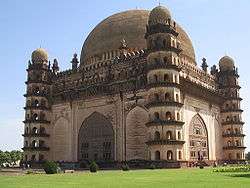
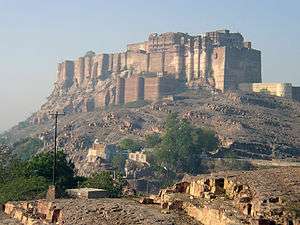
The Medieval and Early Modern periods in India is defined by the disruption to native Indian elites by Muslim Central Asian nomadic clans;[4][5] leading to the Rajput resistance to Muslim conquests, and growth of Hindu, Muslim, and Sikh, dynasties and empires, built upon new military technology and techniques;[235] the rise of theistic devotional trend of the Bhakti movement, the cultural synthesis of Hindu and Muslim elements reflected in Indo-Islamic architecture;[236][237] and came to an end with the British Raj.
Growth of Muslim Population in Medieval India
Like other settled, agrarian societies in history, those in the Indian subcontinent have been attacked by nomadic tribes throughout its long history. In evaluating the impact of Islam on the sub-continent, one must note that the northwestern sub-continent was a frequent target of tribes raiding from Central Asia. In that sense, the Muslim intrusions and later Muslim invasions were not dissimilar to those of the earlier invasions during the 1st millennium.[238] What does however, make the Muslim intrusions and later Muslim invasions different is that unlike the preceding invaders who assimilated into the prevalent social system, the successful Muslim conquerors retained their Islamic identity and created new legal and administrative systems that challenged and usually in many cases superseded the existing systems of social conduct and ethics, even influencing the non-Muslim rivals and common masses to a large extent, though non-Muslim population was left to their own laws and customs.[4][5] They also introduced new cultural codes that in some ways were very different from the existing cultural codes. This led to the rise of a new Indian culture which was mixed in nature, though different from both the ancient Indian culture and later westernised modern Indian culture. At the same time it must be noted that overwhelming majority of Muslims in India are Indian natives converted to Islam. This factor also played an important role in the synthesis of cultures.[239]
The growth of Muslim dynasties also caused destruction and desecration of politically important temples of enemy states,[240] cases of forced conversions to Islam,[241] payment of jizya tax,[242] and loss of life for the non-Muslim population.[243] As noted by Historian Will Durant:
The Mohammedan conquest of India is probably the bloodiest story in history. The Islamic historians and scholars have recorded with great glee and pride the slaughters of Hindus, forced conversions, abduction of Hindu women and children to slave markets and the destruction of temples carried out by the warriors of Islam during 800 AD to 1700 AD. Millions of Hindus were converted to Islam by sword during this period.[244]
Rajput resistance to Muslim conquests
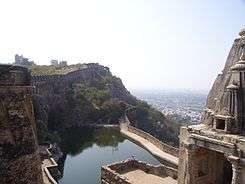
Before the Muslim expeditions into the Indian subcontinent, much of North and West India were ruled by Rajput dynasties. The Rajputs and the south Indian Chalukya dynasty were successful in containing Arab Muslim expansion during the Caliphate campaigns in India; but, later Central Asian Muslim Turks were able to break through the Rajput defence into the Northern Indian heartland. However, the Rajputs held out against the Muslim Turkic empires for several centuries. They earned a reputation by fighting battles with code of chivalrous conduct rooted in a strong adherence to tradition and Chi.[245]
- The Rajput Chauhan dynasty established rule over Delhi and Ajmer in the 10th century. The most popular ruler of this dynasty was Prithviraj Chauhan. His reign marked one of the most significant moment in Indian history; his battles with Muslim Sultan Muhammad Ghori. The First Battle of Tarain, Ghori was defeated with heavy losses. However, the Second Battle of Tarain saw the Rajput army eventually defeated, laying the foundation of Muslim rule in mainland India.[246]
- Mewar dynasty under Maharana Hammir defeated Muhammad Tughlaq with Bargujars as his main allies, and captured him. Tughlaq had to pay a huge ransom and relinquish all of Mewar's lands. After this event, the Delhi Sultanate did not attack Chittorgarh for a few hundred years. The Rajputs reestablished their independence, and Rajput states were established as far east as Bengal and north into the Punjab. The Tomaras established themselves at Gwalior, and the ruler Man Singh Tomar built the fortress which still stands there.[247]
- Mewar emerged as the leading Rajput state, and Rana Kumbha expanded his kingdom at the expense of the sultanates of Malwa and Gujarat.[247][248]
- Rana Sanga of Mewar became the principal player in Northern India. His objectives grew in scope – he planned to conquer the much sought after prize of the Muslim rulers of the time, Delhi. However, his defeat in the Battle of Khanwa consolidated the new Mughal dynasty in India.[247]
- Maharana Pratap of Mewar, a 16th-century Rajput ruler firmly resisted the Mughals. Akbar sent many missions against him. He survived to ultimately gain control of all of Mewar, excluding Chittorgarh Fort.[249]
- The Chittorgarh Fort is the largest in India; it is a symbol for Rajput resistance. Chittorgarh Fort was sacked three times between the 15th and 16th centuries by Muslim armies; in 1303 Allauddin Khilji defeated Rana Ratan Singh; in 1535 Bahadur Shah, the Sultanate of Gujarat defeated Bikramjeet Singh; and in 1567 Akbar defeated Maharana Udai Singh II, who left the fort and founded Udaipur. Each time the men fought bravely rushing out of the fort walls charging the enemy, but lost. Following these defeats, Jauhar was committed thrice by more than 13,000 ladies and children of the Rajput soldiers who laid their lives in battles at Chittorgarh Fort; first led by Rani Padmini wife of Rana Rattan Singh who was killed in the battle in 1303, and later by Rani Karnavati in 1537 AD.[250][251][252]
Delhi Sultanate
In the 12th and 13th centuries, Central Asian Turks invaded parts of northern India and established the Delhi Sultanate in the former Hindu holdings.[253]
Historian Dr. R.P. Tripathi noted:
The history of Muslim sovereignty in India begins properly speaking with Iltutmish.[254]
The subsequent Slave dynasty of Delhi managed to conquer large areas of northern India, while the Khilji dynasty conquered most of central India but were ultimately unsuccessful in conquering and uniting the subcontinent. The Sultanate ushered in a period of Indian cultural renaissance. The resulting "Indo-Muslim" fusion of cultures left lasting syncretic monuments in architecture, music, literature, religion, and clothing. It is surmised that the language of Urdu (literally meaning "horde" or "camp" in various Turkic dialects) was born during the Delhi Sultanate period as a result of the intermingling of the local speakers of Sanskritic Prakrits with immigrants speaking Persian, Turkic, and Arabic under the Muslim rulers. The Delhi Sultanate is the only Indo-Islamic empire to enthrone one of the few female rulers in India, Razia Sultana (1236–1240).
A Turco-Mongol conqueror in Central Asia, Timur (Tamerlane), attacked the reigning Sultan Nasir-u Din Mehmud of the Tughlaq Dynasty in the north Indian city of Delhi.[255] The Sultan's army was defeated on 17 December 1398. Timur entered Delhi and the city was sacked, destroyed, and left in ruins, after Timur's army had killed and plundered for three days and nights. He ordered the whole city to be sacked except for the sayyids, scholars, and the "other Muslims" (artists); 100,000 war prisoners were put to death in one day.[256] The Sultanate suffered significantly from the sacking of Delhi revived briefly under the Lodi Dynasty, but it was a shadow of the former.
Bhakti movement and Sikhism
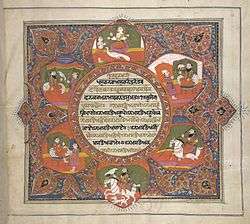
The Bhakti movement refers to the theistic devotional trend that emerged in medieval Hinduism[258] and later revolutionised in Sikhism.[259] It originated in the seventh-century south India (now parts of Tamil Nadu and Kerala), and spread northwards.[258] It swept over east and north India from the 15th century onwards, reaching its zenith between the 15th and 17th century CE.[260]
- The Bhakti movement regionally developed around different gods and goddesses, such as Vaishnavism (Vishnu), Shaivism (Shiva), Shaktism (Shakti goddesses), and Smartism.[261][262][263] The movement was inspired by many poet-saints, who championed a wide range of philosophical positions ranging from theistic dualism of Dvaita to absolute monism of Advaita Vedanta.[264][265]
- Sikhism is based on the spiritual teachings of Guru Nanak, the first Guru,[266] and the ten successive Sikh gurus. After the death of the tenth Guru, Guru Gobind Singh, the Sikh scripture, Guru Granth Sahib, became the literal embodiment of the eternal, impersonal Guru, where the scripture's word serves as the spiritual guide for Sikhs.[267][268][269]
Vijayanagara Empire

The Vijayanagara Empire was established in 1336 by Harihara I and his brother Bukka Raya I of Sangama Dynasty.[270] The empire rose to prominence as a culmination of attempts by the southern powers to ward off Islamic invasions by the end of the 13th century.[271] The empire is named after its capital city of Vijayanagara, whose ruins surround present day Hampi, now a World Heritage Site in Karnataka, India.[272]
The empire's legacy includes many monuments spread over South India, the best known of which is the group at Hampi. The previous temple building traditions in South India came together in the Vijayanagara Architecture style. The mingling of all faiths and vernaculars inspired architectural innovation of Hindu temple construction, first in the Deccan and later in the Dravidian idioms using the local granite. South Indian mathematics flourished under the protection of the Vijayanagara Empire in Kerala. The south Indian mathematician Madhava of Sangamagrama founded the famous Kerala school of astronomy and mathematics in the 14th century which produced a lot of great south Indian mathematicians like Parameshvara, Nilakantha Somayaji and Jyeṣṭhadeva in medieval south India.[273] Efficient administration and vigorous overseas trade brought new technologies such as water management systems for irrigation.[274] The empire's patronage enabled fine arts and literature to reach new heights in Kannada, Telugu, Tamil and Sanskrit, while Carnatic music evolved into its current form.[275]
The Vijayanagara Empire created an epoch in South Indian history that transcended regionalism by promoting Hinduism as a unifying factor. The empire reached its peak during the rule of Sri Krishnadevaraya when Vijayanagara armies were consistently victorious. The empire annexed areas formerly under the Sultanates in the northern Deccan and the territories in the eastern Deccan, including Kalinga, while simultaneously maintaining control over all its subordinates in the south.[276] Many important monuments were either completed or commissioned during the time of Krishna Deva Raya. Vijayanagara went into decline after the defeat in the Battle of Talikota (1565).
Regional powers
For two and a half centuries from the mid 13th, the politics in the Northern India was dominated by the Delhi Sultanate and in the Southern India by the Vijayanagar Empire which originated as a political heir of the erstwhile Hoysala Empire and Pandyan Empire.[277] However, there were other regional powers present as well. In the North, the Rajputs were a dominant force in the Western and Central India. Their power reached to the zenith under Rana Sanga during whose time Rajput armies were constantly victorious against the Sultanate army.[278] In the South, the Bahmani Sultanate was the chief rival of the Vijaynagara and gave Vijayanagara tough days many a times.[279] In the early 16th century Krishnadevaraya of the Vijayanagara Empire defeated the last remnant of Bahmani Sultanate power after which the Bahmani Sultanate collapsed.[280] It was established either by a Brahman convert or patronised by a Brahman and form that source it got the name Bahmani.[281] In the early 16th century, it collapsed and got split into five small Deccan sultanates.[282] In the East, the Gajapati Kingdom remained a strong regional power to reckon with.[283] In the Northeast the Ahom Kingdom was a major power for six centuries;[284][285] and the Kingdom of Manipur, which ruled from their seat of power at Kangla Fort and developed a sophisticated Hindu Gaudiya Vaishnavite culture.[286][287][288]
Mughal Empire
.jpg)
In 1526, Babur, a Timurid descendant of Timur and Genghis Khan from Fergana Valley (modern day Uzbekistan), swept across the Khyber Pass and established the Mughal Empire, which at its zenith covered modern day Afghanistan, Pakistan, India and Bangladesh.[289] However, his son Humayun was defeated by the Afghan warrior Sher Shah Suri in the year 1540, and Humayun was forced to retreat to Kabul. After Sher Shah's death, his son Islam Shah Suri and the Hindu emperor Hemu Vikramaditya, who had won 22 battles against Afghan rebels and forces of Akbar, from Punjab to Bengal and had established a secular rule in North India from Delhi till 1556 after winning Battle of Delhi. Akbar's forces defeated and killed Hemu in the Second Battle of Panipat on 6 November 1556.
Akbar's son, Jahangir more or less followed father's policy. The Mughal dynasty ruled most of the Indian subcontinent by 1600. The reign of Shah Jahan was the golden age of Mughal architecture. He erected several large monuments, the most famous of which is the Taj Mahal at Agra, as well as the Moti Masjid, Agra, the Red Fort, the Jama Masjid, Delhi, and the Lahore Fort. The Mughal Empire reached the zenith of its territorial expanse during the reign of Aurangzeb and also started its terminal decline in his reign due to Maratha military resurgence under Shivaji. Historian Sir. J.N. Sarkar wrote, "All seemed to have been gained by Aurangzeb now, but in reality all was lost."[290] The same was echoed by Vincent Smith: "The Deccan proved to be the graveyard not only of Aurangzeb's body but also of his empire".[143]
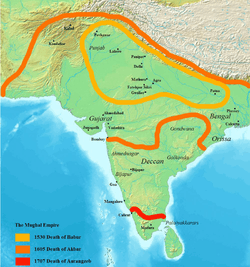
The empire went into decline thereafter. The Mughals suffered several blows due to invasions from Marathas and Afghans. During the decline of the Mughal Empire, several smaller states rose to fill the power vacuum and themselves were contributing factors to the decline. In 1737, the Maratha general Bajirao of the Maratha Empire invaded and plundered Delhi. Under the general Amir Khan Umrao Al Udat, the Mughal Emperor sent 8,000 troops to drive away the 5,000 Maratha cavalry soldiers. Baji Rao, however, easily routed the novice Mughal general and the rest of the imperial Mughal army fled. In 1737, in the final defeat of Mughal Empire, the commander-in-chief of the Mughal Army, Nizam-ul-mulk, was routed at Bhopal by the Maratha army. This essentially brought an end to the Mughal Empire. In 1739, Nader Shah, emperor of Iran, defeated the Mughal army at the Battle of Karnal.[291] After this victory, Nader captured and sacked Delhi, carrying away many treasures, including the Peacock Throne.[292] The Mughal dynasty was reduced to puppet rulers by 1757. The remnants of the Mughal dynasty were finally defeated during the Indian Rebellion of 1857, also called the 1857 War of Independence, and the remains of the empire were formally taken over by the British while the Government of India Act 1858 let the British Crown assume direct control of India in the form of the new British Raj.
The Mughals were perhaps the richest single dynasty to have ever existed. During the Mughal era, the dominant political forces consisted of the Mughal Empire and its tributaries and, later on, the rising successor states – including the Maratha Empire – which fought an increasingly weak Mughal dynasty. The Mughals, while often employing brutal tactics to subjugate their empire, had a policy of integration with Indian culture, which is what made them successful where the short-lived Sultanates of Delhi had failed. This period marked vast social change in the subcontinent as the Hindu majority were ruled over by the Mughal emperors, most of whom showed religious tolerance, liberally patronising Hindu culture. The famous emperor Akbar, who was the grandson of Babar, tried to establish a good relationship with the Hindus. However, later emperors such as Aurangazeb tried to establish complete Muslim dominance, and as a result several historical temples were destroyed during this period and taxes imposed on non-Muslims. Akbar declared "Amari" or non-killing of animals in the holy days of Jainism. He rolled back the jizya tax for non-Muslims. The Mughal emperors married local royalty, allied themselves with local maharajas, and attempted to fuse their Turko-Persian culture with ancient Indian styles, creating a unique Indo-Saracenic architecture. It was the erosion of this tradition coupled with increased brutality and centralisation that played a large part in the dynasty's downfall after Aurangzeb, who unlike previous emperors, imposed relatively non-pluralistic policies on the general population, which often inflamed the majority Hindu population.
Maratha Empire
.jpg)
The early 18th century saw the rise of Maratha suzerainty over the Indian Subcontinent. Under the Peshwas, the Maratha Empire consolidated and ruled over much of the Subcontinent. The Marathas are credited to a large extent for ending the Mughal rule in India.[293][294][295]
The Maratha kingdom was founded and consolidated by Chatrapati Shivaji, a Maratha aristocrat of the Bhonsle clan who was determined to establish Hindavi Swarajya. Sir J.N. Sarkar described Shivaji as "the last great constructive genius and nation builder that the Hindu race has produced".[296] However, the credit for making the Marathas formidable power nationally goes to Peshwa Bajirao I.
Historian K.K. Datta wrote about Bajirao I:
He may very well be regarded as the second founder of the Maratha Empire.[297]
By the early 18th century, the Maratha Kingdom had transformed itself into the Maratha Empire under the rule of the Peshwas (prime ministers). In 1737, the Marathas defeated a Mughal army in their capital, Delhi itself in Battle of Delhi (1737). The Marathas continued their military campaigns against Mughals, Nizam, Nawab of Bengal and Durrani Empire to further extend their boundaries. Gordon explained how the Maratha systematically took control over new regions. They would start with annual raids, followed by collecting ransom from villages and towns while the declining Mughal Empire retained nominal control and finally taking over the region. He explained it with the example of Malwa region. Marathas built an efficient system of public administration known for its attention to detail. It succeeded in raising revenue in districts that recovered from years of raids, up to levels previously enjoyed by the Mughals. For example, the cornerstone of the Maratha rule in Malwa rested on the 60 or so local tax collectors who advanced the Maratha ruler Peshwa a portion of their district revenues at interest.[298] By 1760, the domain of the Marathas stretched across practically the entire subcontinent.[299]
The Northwestern expansion of the Marathas was stopped after the Third Battle of Panipat (1761). However, the Maratha authority in the north was re-established within a decade under Peshwa Madhavrao I.[300] The defeat of Marathas by British in third Anglo-Maratha Wars brought end to the empire by 1820. The last peshwa, Baji Rao II, was defeated by the British in the Third Anglo-Maratha War. With the defeat of the Marathas, no native power represented any significant threat for the British afterwards.[301] As noted by Charles Metcalfe, one of the ablest of the British Officials in India and later acting Governor-General, wrote in 1806:
India contains no more than two great powers, British and Mahratta, and every other state acknowledges the influence of one or the other. Every inch that we recede will be occupied by them.[302][303]
The Marathas also developed a potent navy circa 1660s, which at its peak, dominated the territorial waters of the western coast of India from Mumbai to Savantwadi.[304] For a brief period, the Maratha Navy also established its base at the Andaman Islands in the Bay of Bengal.[305] It would engage in attacking the British, Portuguese, Dutch, and Siddi Naval ships and kept a check on their naval ambitions. The Maratha Navy dominated till around the 1730s, was in a state of decline by the 1770s, and ceased to exist by 1818.[306]
Sikh Empire
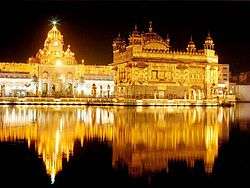
The Sikh Empire, ruled by members of the Sikh religion, was a political entity that governed the Northwestern regions of the Indian Subcontinent. The empire, based around the Punjab region, existed from 1799 to 1849. It was forged, on the foundations of the Khalsa, under the leadership of Maharaja Ranjit Singh (1780–1839) from an array of autonomous Punjabi Misls.
Maharaja Ranjit Singh consolidated many parts of northern India into an empire. He primarily used his highly disciplined Sikh Khalsa Army that he trained and equipped with modern military technologies and technique. Ranjit Singh proved himself to be a master strategist and selected well qualified generals for his army. He continuously defeated the Afghan armies and successfully ended the Afghan-Sikh Wars. In stages, he added the central Punjab, the provinces of Multan and Kashmir, the Peshawar Valley, and the Derajat to his empire.[307][308]
At its peak, in the 19th century, the empire extended from the Khyber Pass in the west, to Kashmir in the north, to Sindh in the south, running along Sutlej river to Himachal in the east. After the death of Ranjit Singh, the empire weakened, leading to the conflict with the British East India Company. The hard-fought first Anglo-Sikh war and second Anglo-Sikh war marked the downfall of the Sikh Empire; making it among the last areas of the Indian subcontinent to be conquered by the British.
Other kingdoms
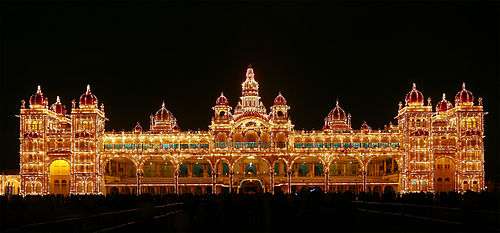
There were several other kingdoms which ruled over parts of India in the later medieval period prior to the British occupation. However, most of them were bound to pay regular tribute to the Marathas.[299] The rule of Wodeyar dynasty which established the Kingdom of Mysore in southern India in around 1400 CE by was interrupted by Hyder Ali and his son Tipu Sultan in the later half of the 18th century. Under their rule, Mysore fought a series of wars sometimes against the combined forces of the British and Marathas, but mostly against the British, with Mysore receiving some aid or promise of aid from the French.
The Nawabs of Bengal had become the de facto rulers of Bengal following the decline of Mughal Empire. However, their rule was interrupted by Marathas who carried six expeditions in Bengal from 1741 to 1748 as a result of which Bengal became a tributary state of Marathas.
Hyderabad was founded by the Qutb Shahi dynasty of Golconda in 1591. Following a brief Mughal rule, Asif Jah, a Mughal official, seized control of Hyderabad and declared himself Nizam-al-Mulk of Hyderabad in 1724. It was ruled by a hereditary Nizam from 1724 until 1948. Both Kingdom of Mysore and Hyderabad State became princely states in British India in 1799 and 1798 respectively.
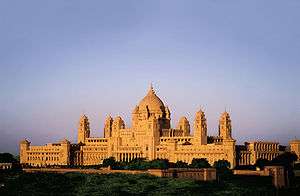
The 18th century saw the whole of Rajputana virtually subdued by the Marathas. The Second Anglo-Maratha War distracted the Marathas from 1807 to 1809, but afterwards Maratha domination of Rajputana resumed. In 1817, the British went to war with the Pindaris, raiders who were based in Maratha territory, which quickly became the Third Anglo-Maratha War, and the British government offered its protection to the Rajput rulers from the Pindaris and the Marathas. By the end of 1818 similar treaties had been executed between the other Rajput states and Britain. The Maratha Sindhia ruler of Gwalior gave up the district of Ajmer-Merwara to the British, and Maratha influence in Rajasthan came to an end. Most of the Rajput princes remained loyal to Britain in the Revolt of 1857, and few political changes were made in Rajputana until Indian independence in 1947. The Rajputana Agency contained more than 20 princely states, most notable being Udaipur State, Jaipur State, Bikaner State and Jodhpur State.
After the First Anglo-Sikh War in 1846, under the terms of the Treaty of Amritsar, the British government sold Kashmir to Maharaja Gulab Singh and the princely state of Jammu and Kashmir, the second largest princely state in British India, was created by the Dogra dynasty.[309][310]
Around the 18th century, the modern state of Nepal was formed by Gurkha rulers.
Beginning of European explorations and establishment of Colonialism
Western explorers and traders

In 1498, a Portuguese fleet under Vasco da Gama successfully discovered a new sea route from Europe to India, which paved the way for direct Indo-European commerce. The Portuguese soon set up trading posts in Goa, Daman, Diu and Bombay. Goa became the main Portuguese base until it was annexed by India in 1961.[311]
The next to arrive were the Dutch, with their main base in Ceylon. They established ports in Malabar. However, their expansion into India was halted, after their defeat in the Battle of Colachel by the Kingdom of Travancore, during the Travancore-Dutch War. The Dutch never recovered from the defeat and no longer posed a large colonial threat to India.[312][313]
In the words of the noted historian, Professor A. Sreedhara Menon:
A disaster of the first magnitude for the Dutch, the battle of Colachel shattered for all time their dream of the conquest of Kerala.
The internal conflicts among Indian kingdoms gave opportunities to the European traders to gradually establish political influence and appropriate lands. Following the Dutch, the British—who set up in the west coast port of Surat in 1619—and the French both established trading outposts in India. Although these continental European powers controlled various coastal regions of southern and eastern India during the ensuing century, they eventually lost all their territories in India to the British, with the exception of the French outposts of Pondichéry and Chandernagore,[314][315] and the Portuguese colonies of Goa, Daman and Diu.[316]
Expansion of the British East India Company rule in India
In 1617 the British East India Company was given permission by Mughal Emperor Jahangir to trade in India.[317] Gradually their increasing influence led the de jure Mughal emperor Farrukh Siyar to grant them dastaks or permits for duty-free trade in Bengal in 1717.[318]

The Nawab of Bengal Siraj Ud Daulah, the de facto ruler of the Bengal province, opposed British attempts to use these permits. This led to the Battle of Plassey on 23 June 1757, in which the Bengal Army of the East India Company, led by Robert Clive, defeated the French-supported Nawab's forces. This was the first real political foothold with territorial implications that the British acquired in India. Clive was appointed by the company as its first 'Governor of Bengal' in 1757.[319] This was combined with British victories over the French at Madras, Wandiwash and Pondichéry that, along with wider British successes during the Seven Years' War, reduced French influence in India. The British East India Company extended its control over the whole of Bengal. After the Battle of Buxar in 1764, the company acquired the rights of administration in Bengal from de jure Mughal Emperor Shah Alam II; this marked the beginning of its formal rule, which within the next century engulfed most of India.[320] The East India Company monopolised the trade of Bengal. They introduced a land taxation system called the Permanent Settlement which introduced a feudal-like structure in Bengal, often with zamindars set in place.
As a result of the three Carnatic Wars, the British East India Company gained exclusive control over the entire Carnatic region of India.[321] The Company soon expanded its territories around its bases in Bombay and Madras; the Anglo-Mysore Wars (1766–1799) and later the Anglo-Maratha Wars (1772–1818) led to control of the vast regions of India. Ahom Kingdom of North-east India first fell to Burmese invasion and then to British after Treaty of Yandabo in 1826. Punjab, North-West Frontier Province, and Kashmir were annexed after the Second Anglo-Sikh War in 1849; however, Kashmir was immediately sold under the Treaty of Amritsar to the Dogra Dynasty of Jammu and thereby became a princely state. The border dispute between Nepal and British India, which sharpened after 1801, had caused the Anglo-Nepalese War of 1814–16 and brought the defeated Gurkhas under British influence. In 1854, Berar was annexed, and the state of Oudh was added two years later.
After the turn of the 19th century, Governor-General Wellesley began what became two decades of accelerated expansion of Company territories.[322] This was achieved either by subsidiary alliances between the Company and local rulers or by direct military annexation. The subsidiary alliances created the princely states or native states of the Hindu maharajas and the Muslim nawabs.
By the 1850s, the East India Company controlled most of the Indian sub-continent, which included present-day Pakistan and Bangladesh also. Their policy was sometimes summed up as Divide and Rule, taking advantage of the enmity festering between various princely states and social and religious groups.[323]
Indian indenture system
The Indian indenture system was an ongoing system of indenture, a form of debt bondage, by which 3.5 million Indians were transported to various colonies of European powers to provide labour for the (mainly sugar) plantations. It started from the end of slavery in 1833 and continued until 1920. This resulted in the development of large Indian diaspora, which spread from the Indian Ocean (i.e. Réunion and Mauritius) to Pacific Ocean (i.e. Fiji), as well as the growth of Indo-Caribbean and Indo-African population.
Modern period and Independence (after c. 1850)
The rebellion of 1857 and its consequences

The Indian rebellion of 1857 was a large-scale rebellion by soldiers employed by the British East India in northern and central India against the Company's rule. The rebels were disorganised, had differing goals, and were poorly equipped, led, and trained, and had no outside support or funding. They were brutally suppressed and the British government took control of the Company and eliminated many of the grievances that caused it. The government also was determined to keep full control so that no rebellion of such size would ever happen again.[324]
In the aftermath, all power was transferred from the East India Company to the British Crown, which began to administer most of India as a number of provinces. The Crown controlled the Company's lands directly and had considerable indirect influence over the rest of India, which consisted of the Princely states ruled by local royal families. There were officially 565 princely states in 1947, but only 21 had actual state governments, and only three were large (Mysore, Hyderabad and Kashmir). They were absorbed into the independent nation in 1947–48.[325]
British Raj (c. 1858–1947)

After 1857, the colonial government strengthened and expanded its infrastructure via the court system, legal procedures, and statutes. The Indian Penal Code came into being.[326] In education, Thomas Babington Macaulay had made schooling a priority for the Raj in his famous minute of February 1835 and succeeded in implementing the use of English as the medium of instruction. By 1890 some 60,000 Indians had matriculated.[327] The Indian economy grew at about 1% per year from 1880 to 1920, and the population also grew at 1%. However, from 1910s Indian private industry began to grow significantly. India built a modern railway system in the late 19th century which was the fourth largest in the world.[328] The British Raj invested heavily in infrastructure, including canals and irrigation systems in addition to railways, telegraphy, roads and ports.[329] However, historians have been bitterly divided on issues of economic history, with the Nationalist school arguing that India was poorer at the end of British rule than at the beginning and that impoverishment occurred because of the British.[330]
In 1905, Lord Curzon split the large province of Bengal into a largely Hindu western half and "Eastern Bengal and Assam", a largely Muslim eastern half. The British goal was said to be for efficient administration but the people of Bengal were outraged at the apparent "divide and rule" strategy. It also marked the beginning of the organised anti-colonial movement. When the Liberal party in Britain came to power in 1906, he was removed. Bengal was reunified in 1911. The new Viceroy Gilbert Minto and the new Secretary of State for India John Morley consulted with Congress leaders on political reforms. The Morley-Minto reforms of 1909 provided for Indian membership of the provincial executive councils as well as the Viceroy's executive council. The Imperial Legislative Council was enlarged from 25 to 60 members and separate communal representation for Muslims was established in a dramatic step towards representative and responsible government.[331] Several socio-religious organisations came into being at that time. Muslims set up the All India Muslim League in 1906. It was not a mass party but was designed to protect the interests of the aristocratic Muslims. It was internally divided by conflicting loyalties to Islam, the British, and India, and by distrust of Hindus.[332] The Akhil Bharatiya Hindu Mahasabha and Rashtriya Swayamsevak Sangh (RSS) sought to represent Hindu interests though the latter always claimed it to be a "cultural" organisation.[333] Sikhs founded the Shiromani Akali Dal in 1920.[334] However, the largest and oldest political party Indian National Congress, founded in 1885, is perceived to have attempted to keep a distance from the socio-religious movements and identity politics.[335]
Hindu Renaissance
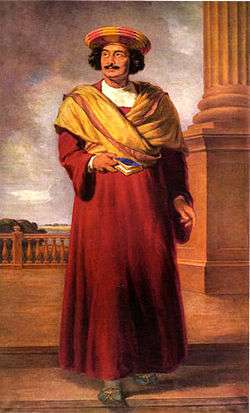
The Hindu Renaissance refers to a social reform movement during the nineteenth and early twentieth centuries in the Bengal region of British India during the period of British rule dominated by English educated Bengali Hindus. The Bengal Renaissance can be said to have started with Raja Ram Mohan Roy (1772–1833) and ended with Rabindranath Tagore (1861–1941), although many stalwarts thereafter continued to embody particular aspects of the unique intellectual and creative output of the region.[336] Nineteenth century Bengal was a unique blend of religious and social reformers, scholars, literary giants, journalists, patriotic orators, and scientists, all merging to form the image of a renaissance, and marked the transition from the 'medieval' to the 'modern'.[337]
During this period, Bengal witnessed an intellectual awakening that is in some way similar to the Renaissance. This movement questioned existing orthodoxies, particularly with respect to women, marriage, the dowry system, the caste system, and religion. One of the earliest social movements that emerged during this time was the Young Bengal movement, which espoused rationalism and atheism as the common denominators of civil conduct among upper caste educated Hindus. It played an important role in reawakening Indian minds and intellect across the sub-continent.
Famines
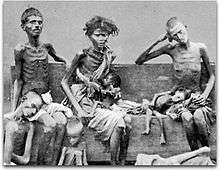
During the British Raj, famines in India, often attributed to failed policies of British colonial government, were some of the worst ever recorded, including the Great Famine of 1876–78 in which 6.1 million to 10.3 million people died[339] and the Indian famine of 1899–1900 in which 1.25 to 10 million people died.[340] The Third Plague Pandemic in the mid-19th century killed 10 million people in India.[341] Despite persistent diseases and famines, the population of the Indian subcontinent, which stood at about 125 million in 1750, had reached 389 million by 1941.[342]
The Indian independence movement
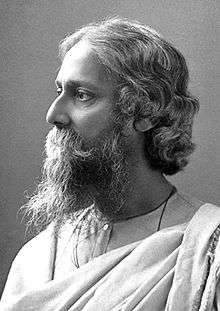

The numbers of British in India were small, yet they were able to rule two-thirds of the subcontinent directly and exercise considerable leverage over the princely states that accounted for the remaining one-third of the area.
One of the most important events of the 19th century was the rise of Indian nationalism,[345] leading Indians to seek first "self-rule" and later "complete independence". However, historians are divided over the causes of its rise. Probable reasons include a "clash of interests of the Indian people with British interests",[345] "racial discriminations",[346] "the revelation of India's past",[347] "inter-linking of the new social groups in different regions",[348] and Indians coming in close contact with "European education".
The first step toward Indian self-rule was the appointment of councillors to advise the British viceroy in 1861 and the first Indian was appointed in 1909. Provincial Councils with Indian members were also set up. The councillors' participation was subsequently widened into legislative councils. The British built a large British Indian Army, with the senior officers all British and many of the troops from small minority groups such as Gurkhas from Nepal and Sikhs.[349] The civil service was increasingly filled with natives at the lower levels, with the British holding the more senior positions.[350]
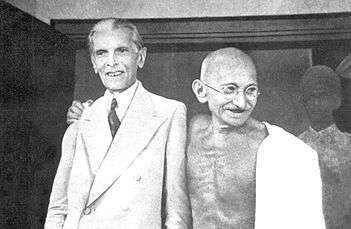
Bal Gangadhar Tilak, an Indian nationalist leader, declared Swaraj as the destiny of the nation. His popular sentence "Swaraj is my birthright, and I shall have it"[351] became the source of inspiration for Indians. Tilak was backed by rising public leaders like Bipin Chandra Pal and Lala Lajpat Rai, who held the same point of view. Under them, India's three big provinces – Maharashtra, Bengal and Punjab, India shaped the demand of the people and India's nationalism. In 1907, the Congress was split into two factions: The radicals, led by Tilak, advocated civil agitation and direct revolution to overthrow the British Empire and the abandonment of all things British. The moderates, led by leaders like Dadabhai Naoroji and Gopal Krishna Gokhale, on the other hand wanted reform within the framework of British rule.[352]
The British themselves adopted a "carrot and stick" approach in recognition of India's support during the First World War and in response to renewed nationalist demands. The means of achieving the proposed measure were later enshrined in the Government of India Act 1919, which introduced the principle of a dual mode of administration, or diarchy, in which elected Indian legislators and appointed British officials shared power.[353]
From 1920 leaders such as Mahatma Gandhi began highly popular mass movements to campaign against the British Raj using largely peaceful methods. The Gandhi-led independence movement opposed the British rule using non-violent methods like non-co-operation, civil disobedience and economic resistance. However, revolutionary activities against the British rule took place throughout the Indian subcontinent and some others adopted a militant approach like the Indian National Army that sought to overthrow British rule by armed struggle. The Government of India Act 1935 was a major success in this regard.[352]
World War II
During the Second World War (1939–1945), India was controlled by the United Kingdom, with the British holding territories in India including over five hundred autonomous Princely States; British India officially declared war on Nazi Germany in September 1939.[354] The British Raj, as part of the Allied Nations, sent over two and a half million volunteer soldiers to fight under British command against the Axis powers. Additionally, several Indian Princely States provided large donations to support the Allied campaign during the War. India also provided the base for American operations in support of China in the China Burma India Theatre.

Indians fought with distinction throughout the world, including in the European theatre against Germany, in North Africa against Germany and Italy, in the in the South Asian region defending India against the Japanese and fighting the Japanese in Burma. Indians also aided in liberating British colonies such as Singapore and Hong Kong after the Japanese surrender in August 1945. Over 87,000 Indian soldiers (including those from modern day Pakistan, Nepal, and Bangladesh) died in World War II.
The Indian National Congress, led by Mohandas Karamchand Gandhi, Sardar Vallabhbhai Patel and Maulana Azad, denounced Nazi Germany but would not fight it or anyone else until India was independent. Congress launched the Quit India Movement in August 1942, refusing to co-operate in any way with the government until independence was granted. The government was ready for this move. It immediately arrested over 60,000 national and local Congress leaders, and then moved to suppress the violent reaction of Congress supporters. Key leaders were kept in prison until June 1945, although Gandhi was released in May 1944 because of his health. Congress, with its leaders incommunicado, played little role on the home front. The Muslim League rejected the Quit India movement and worked closely with the Raj authorities.
Subhas Chandra Bose (also called Netaji) broke with Congress and tried to form a military alliance with Germany or Japan to gain independence. Japan helped him set up the Indian National Army (INA) which fought under Japanese direction, mostly in Burma. Bose also headed the Provisional Government of Free India, a government-in-exile based in Singapore. It controlled no Indian territory and was used only to raise troops for Japan.
By 1942, neighbouring Burma was invaded by Japan, which by then had already captured the Indian territory of Andaman and Nicobar Islands. Japan gave nominal control of the islands to the Provisional Government of Free India on 21 October 1943, and in the following March, the Indian National Army with the help of Japan crossed into India and advanced as far as Kohima in Nagaland. This advance on the mainland of South Asia reached its farthest point on India territory, retreating from the Battle of Kohima in June and from that of Imphal on 3 July 1944.
The region of Bengal in India suffered a devastating famine during 1940-43.
After World War II (c. 1946–1947)
In January 1946, a number of mutinies broke out in the armed services, starting with that of RAF servicemen frustrated with their slow repatriation to Britain. The mutinies came to a head with mutiny of the Royal Indian Navy in Bombay in February 1946, followed by others in Calcutta, Madras, and Karachi. Although the mutinies were rapidly suppressed, they had the effect of spurring the new Labour government in Britain to action. Also in early 1946, new elections were called in India and in eight of the eleven provinces Congress candidates won.
Late in 1946, the Labour government decided to end British rule of India, and in early 1947 Britain announced its intention of transferring power no later than June 1948 and participating in the formation of an interim government.
Along with the desire for independence, tensions between Hindus and Muslims had also been developing over the years. The Muslims had always been a minority within the subcontinent, and the prospect of an exclusively Hindu government made them wary of independence; they were as inclined to mistrust Hindu rule as they were to resist the foreign Raj, although Gandhi called for unity between the two groups in an astonishing display of leadership.
Muslim League leader Muhammad Ali Jinnah proclaimed 16 August 1946 as Direct Action Day, with the stated goal of highlighting, peacefully, the demand for a Muslim homeland in British India, which resulted in the outbreak of the cycle of violence that would be later called the "Great Calcutta Killing of August 1946". The communal violence spread to Bihar (where Muslims were attacked by Hindus), to Noakhali in Bengal (where Hindus were targeted by Muslims), in Garhmukteshwar in the United Provinces (where Muslims were attacked by Hindus), and on to Rawalpindi in March 1947 in which Hindus were attacked or driven out by Muslims.
Independence and partition (c. 1947–present)
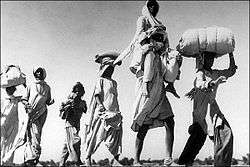
The British Indian territories gained independence in 1947, after being partitioned into the Union of India and Dominion of Pakistan. Following the controversial division of pre-partition Punjab and Bengal, rioting broke out between Sikhs, Hindus and Muslims in these provinces and spread to several other parts of India, leaving some 500,000 dead.[355] Also, this period saw one of the largest mass migrations ever recorded in modern history, with a total of 12 million Hindus, Sikhs and Muslims moving between the newly created nations of India and Pakistan (which gained independence on 15 and 14 August 1947 respectively).[355] In 1971, Bangladesh, formerly East Pakistan and East Bengal, seceded from Pakistan.
Historiography
Historiography is the study of the history and methodology of the discipline of history. The term historiography also denotes a body of historical work on a specialised topic. In recent decades there have been four main schools of historiography regarding India: Cambridge, Nationalist, Marxist, and subaltern. The once common "Orientalist" approach, with its image of a sensuous, inscrutable, and wholly spiritual India, has died out in serious scholarship.[356]
The "Cambridge School", led by Anil Seal,[357] Gordon Johnson,[358] Richard Gordon, and David A. Washbrook,[359] downplays ideology.[360] However, this school of historiography is criticised for western bias or Eurocentrism.[361]
The Nationalist school has focused on Congress, Gandhi, Nehru and high level politics. It highlighted the Mutiny of 1857 as a war of liberation, and Gandhi's 'Quit India' begun in 1942, as defining historical events. This school of historiography has received criticism for Elitism.[362]
The Marxists have focused on studies of economic development, landownership, and class conflict in precolonial India and of deindustrialisation during the colonial period. The Marxists portrayed Gandhi's movement as a device of the bourgeois elite to harness popular, potentially revolutionary forces for its own ends. Again, the Marxists are accused of being "too much" ideologically influenced.[363]
The "subaltern school", was begun in the 1980s by Ranajit Guha and Gyan Prakash.[364] It focuses attention away from the elites and politicians to "history from below", looking at the peasants using folklore, poetry, riddles, proverbs, songs, oral history and methods inspired by anthropology. It focuses on the colonial era before 1947 and typically emphasises caste and downplays class, to the annoyance of the Marxist school.[365]
More recently, Hindu nationalists have created a version of history to support their demands for "Hindutva" ("Hinduness") in Indian society. This school of thought is still in the process of development.[366] In March 2012, Diana L. Eck, professor of Comparative Religion and Indian Studies at Harvard University, authored in her book "India: A Sacred Geography", that idea of India dates to a much earlier time than the British or the Mughals and it wasn't just a cluster of regional identities and it wasn't ethnic or racial.[367][368][369] [370]
See also
- Ancient India
- Chronology of Indian history
- Economic history of India
- History of the Republic of India
- Indian maritime history
- Linguistic history of the Indian subcontinent
- Military history of India
- The Cambridge History of India
Notes
- ↑ See also Tanvir Anjum, Temporal Divides: A Critical Review of the Major Schemes of Periodization in Indian History.
- ↑ See also Michael Witzel, Early Sanskritization. Origins and Development of the Kuru State.
- ↑ The "First urbanization" was the Indus Valley Civilisation.[89]
References
- ↑ White, David Gordon (2003). Kiss of the Yogini. Chicago: University of Chicago Press. p. 28. ISBN 0-226-89483-5.
- ↑ AL Basham (1951), History and Doctrines of the Ajivikas - a Vanished Indian Religion, Motilal Banarsidass, ISBN 978-8120812048, pages 94-103
- 1 2 Sanderson, Alexis (2009), "The Śaiva Age: The Rise and Dominance of Śaivism during the Early Medieval Period." In: Genesis and Development of Tantrism, edited by Shingo Einoo, Tokyo: Institute of Oriental Culture, University of Tokyo, 2009. Institute of Oriental Culture Special Series, 23, pages 41-43.
- 1 2 3 Asher & Talbot 2008, p. 47.
- 1 2 3 Metcalf & Metcalf 2006, p. 6.
- ↑ The Great Partition: The Making of India and Pakistan by Yasmin Khan
- ↑ Bongard-Levin 1979, p. 11.
- ↑ "Indus River Valley Civilizations". History-world.org. Retrieved 4 January 2016.
- ↑ Romila Thapar, A History of India (Penguin Books: New York, 1966) p. 23.
- ↑ Romila Thapar, A History of India, p. 24.
- ↑ Researches Into the History and Civilization of the Kirātas by G. P. Singh p.33
- 1 2 A Social History of Early India by Brajadulal Chattopadhyaya p.259
- 1 2 Technology and Society by Menon R.V.G. p.15
- ↑ The Political Economy of Craft Production: Crafting Empire in South India, by Carla M. Sinopoli p.201
- ↑ Science in India by B.V. Subbarayappa
- ↑ The Cambridge History of Southeast Asia: From early times to c. 1800, Band 1 by Nicholas Tarling p.281
- ↑ Flood, Gavin. Olivelle, Patrick. 2003. The Blackwell Companion to Hinduism. Malden: Blackwell. pg. 273-4.
- ↑ Ancient Indian History and Civilization by Sailendra Nath Sen p.281
- ↑ Societies, Networks, and Transitions, Volume B: From 600 to 1750 by Craig Lockard p.333
- ↑ Power and Plenty: Trade, War, and the World Economy in the Second Millennium by Ronald Findlay,Kevin H. O'Rourke p.67
- ↑ Essays on Ancient India by Raj Kumar p.199
- ↑ The Princeton Encyclopedia of Islamic Political Thought: page 340
- ↑ Al Baldiah wal nahaiyah vol: 7 page 141 "Conquest of Makran"
- ↑ A History of State and Religion in India by Ian Copland, Ian Mabbett, Asim Roy, Kate Brittlebank, Adam Bowles: p. 161
- ↑ History of Mysore Under Hyder Ali and Tippoo Sultan by Joseph Michaud p.143
- ↑ Thapar 1978, p. 19-20.
- 1 2 3 Thapar 1978, p. 19.
- ↑ Thapar 1978, p. 20.
- ↑ Mudur, G.S (21 March 2005). "Still a mystery". KnowHow. The Telegraph. Retrieved 7 May 2007.
- ↑ "The Hathnora Skull Fossil from Madhya Pradesh, India". Multi Disciplinary Geoscientific Studies. Geological Survey of India. 20 September 2005. Archived from the original on 19 June 2007. Retrieved 7 May 2007.
- ↑ "Palaeolithic and Pleistocene of Pakistan". Department of Archaeology, University of Sheffield. Retrieved 1 December 2007.
- ↑ Murray, Tim (1999). Time and Archaeology. London: Routledge. p. 84. ISBN 0-415-11762-3.
- 1 2 Coppa, A.; Bondioli, L.; Cucina, A.; Frayer, D. W.; Jarrige, C.; et al. (6 April 2006). "Palaeontology: Early Neolithic tradition of dentistry" (PDF). Nature. 440 (7085): 755–756. Bibcode:2006Natur.440..755C. doi:10.1038/440755a. PMID 16598247. Retrieved 22 November 2007.
- 1 2 Possehl, G. L. (October 1990). "Revolution in the Urban Revolution: The Emergence of Indus Urbanisation". Annual Review of Anthropology. 19 (1): 261–282. doi:10.1146/annurev.an.19.100190.001401. Retrieved 6 May 2007.
- ↑ Kenoyer, Jonathan Mark; Heuston, Kimberley (May 2005). The Ancient South Asian World. Oxford University Press. ISBN 0-19-517422-4. OCLC 56413341.
- ↑ Rendell, H. R.; Dennell, R. W.; Halim, M. (1989). Pleistocene and Palaeolithic Investigations in the Soan Valley, Northern Pakistan. British Archaeological Reports International Series. Cambridge University Press. p. 364. ISBN 0-86054-691-8. OCLC 29222688.
- ↑ Hellmut De Terra (1969). George Grant MacCurdy, ed. Early man: as depicted by leading authorities at the International symposium, the Academy of Natural Sciences, Philadelphia, March 1937. pp. 267–. ISBN 978-0-8369-1184-8. Retrieved 16 October 2011.
- ↑ Kenneth Oakley (30 April 2007) [1964]. Frameworks for Dating Fossil Man. Transaction Publishers. pp. 224–. ISBN 978-0-202-30960-6. Retrieved 16 October 2011.
- ↑ Parth R. Chauhan. Distribution of Acheulian sites in the Siwalik region. An Overview of the Siwalik Acheulian & Reconsidering Its Chronological Relationship with the Soanian – A Theoretical Perspective.
- ↑ Is the Soanian techno-complex a Mode 1 or Mode 3 phenomenon? A morphometric assessment
- ↑ Distribution of Acheulian sites in the Siwalik region
- ↑ Jarrige, C.; Jarrige, J.-F.; Meadow, R. H.; Quivron, G. (1995). Mehrgarh Field Reports 1975 to 1985 – from the Neolithic to the Indus Civilisation. Dept. of Culture and Tourism, Govt. of Sindh, and the Ministry of Foreign Affairs, France.
- ↑ Khandekar, Nivedita (4 November 2012). "Indus Valley 2,000 years older than thought". Hindustan Times. Archived from the original on 24 October 2014. Retrieved 12 July 2013.
- ↑ http://globalvisiontours.com/kerala/wayanad/edakkal-caves.aspx
- ↑ Protecting megaliths to keep history alive The Hindu daily
- ↑ "Archaeologists rock solid behind Edakkal Cave". The Hindu. Chennai, India. 28 October 2007.
- ↑ "Edakkal Caves". Wayanad.nic. Archived from the original on 29 May 2006. Retrieved 7 April 2007.
- ↑ Gaur, A. S.; Vora, K. H. (10 July 1999). "Ancient shorelines of Gujarat, India, during the Indus civilisation (Late Mid-Holocene): A study based on archaeological evidences". Current India Science. 77 (1): 180–185. ISSN 0011-3891. Retrieved 26 May 2015.
- ↑ Kenoyer 1998.
- ↑ Indian Archaeology, A Review. 1958–1959. Excavations at Alamgirpur. Delhi: Archaeol. Surv. India, pp. 51–52.
- ↑ Leshnik, Lawrence S. (October 1968). "The Harappan 'Port' at Lothal: Another View". American Anthropologist, New Series. 70 (5): 911–922. doi:10.1525/aa.1968.70.5.02a00070. JSTOR 196810.
- ↑ Kenoyer 1998, p. 96.
- ↑ Feuerstein, Georg; Subhash Kak; David Frawley (1995). In search of the cradle of civilization: new light on ancient India. Wheaton, Illinois: Quest Books. p. 147. ISBN 978-0-8356-0720-9.
- ↑ Yasmeen Niaz Mohiuddin, Pakistan: a global studies handbook. ABC-CLIO publishers, 2006, ISBN 1-85109-801-1
- ↑ http://www.globalpost.com/dispatch/news/regions/asia-pacific/india/121116/indus-civilization-2000-years-old-archaeologists
- ↑ http://nation.com.pk/editorials/10-May-2015/cradle-of-civilisation
- ↑ http://tribune.com.pk/story/1100222/rich-heritage-ancient-civilisations-offer-potential-for-regional-linkages-says-aziz/
- ↑ https://books.google.com/books?id=A3aOCwAAQBAJ&pg=PA172&lpg=PA172&dq=wright+2010+indus+valley+cradle&source=bl&ots=ppGBkK9sWg&sig=Qu4VVdFPi_HoY2hP1ptFsm9sVA0&hl=en&sa=X&ved=0ahUKEwjr-_ariuHMAhUF2IMKHVb0CfMQ6AEIJzAC#v=onepage&q=indus%20valley%20cradle&f=false
- ↑ "History". Incredible India. Archived from the original on 2 May 2009. Retrieved 16 May 2010.
- ↑ Early India: A Concise History, D.N.Jha, 2004, p.31
- ↑ Bongard-Levin 1979, p. 51.
- ↑ MacKenzie, Lynn (1995). Non-Western Art: A Brief Guide. Prentice Hall. p. 151.
- ↑ Romila Thapar, A History of India: Part 1, pp. 29–30.
- 1 2 Singh, U. (2009), A History of Ancient and Mediaeval India: From the Stone Age to the 12th Century, Delhi: Longman, p. 255, ISBN 978-81-317-1677-9
- ↑ Stein, B. (27 April 2010), Arnold, D., ed., A History of India (2nd ed.), Oxford: Wiley-Blackwell, p. 47, ISBN 978-1-4051-9509-6
- ↑ Kulke, H.; Rothermund, D. (1 August 2004), A History of India, 4th, Routledge, p. 31, ISBN 978-0-415-32920-0
- ↑ Singhal, K. C; Gupta, Roshan. The Ancient History of India, Vedic Period: A New Interpretation. Atlantic Publishers and Distributors. ISBN 8126902868. P. 150-151.
- ↑
- Day, Terence P. (1982). The Conception of Punishment in Early Indian Literature. Ontario: Wilfrid Laurier University Press. P. 42-45. ISBN 0-919812-15-5.
- ↑ Duiker, William; Spielvogel, Jackson (2012). World History. Cengage learning. p. 90.
- ↑ Nelson, James M. Psychology, Religion, and Spirituality. Springer. p. 77.
- ↑ Flood, Gavin D. (1996), An Introduction to Hinduism, Cambridge University Press, p. 37, ISBN 978-0-521-43878-0
- ↑ "India: The Late 2nd Millennium and the Reemergence of Urbanism". Encyclopædia Britannica. Retrieved 12 May 2007.
- 1 2 Reddy 2003, p. A11.
- 1 2 Michael Witzel (1989), Tracing the Vedic dialects in Dialectes dans les litteratures Indo-Aryennes ed. Caillat, Paris, 97–265.
- ↑ Samuel 2010, p. 48-51, 61–93.
- ↑ Kulke & Rothermund 2004, pp. 41–43.
- ↑ Singh 2009, p. 200.
- 1 2 3 "Hinduism: Other sources: the process of 'Sanskritization'". Encyclopædia Britannica. 2015.
- ↑ Abhijit Basu (2013). Marvels and Mysteries of the Mahabharata. Leadstart Publishing Pvt Ltd. p. 153.
- ↑ M. Witzel, Early Sanskritization. Origins and development of the Kuru State. B. Kölver (ed.), Recht, Staat und Verwaltung im klassischen Indien. The state, the Law, and Administration in Classical India. München : R. Oldenbourg 1997, 27–52 = Electronic Journal of Vedic Studies, vol. 1,4, December 1995,
- 1 2 3 Witzel 1995
- ↑ Samuel 2010, p. 45-51.
- ↑ Valmiki (March 1990). Goldman, Robert P, ed. The Ramayana of Valmiki: An Epic of Ancient India, Volume 1: Balakanda. Ramayana of Valmiki. Princeton, New Jersey: Princeton University Press. p. 23. ISBN 0-691-01485-X.
- ↑ Romila Thapar, A History of India Part 1, p. 31.
- 1 2 Singh 2009, p. 18-21.
- ↑ Brockington, J. L. (1998). The Sanskrit epics, Part 2. Volume 12. BRILL. p. 21. ISBN 90-04-10260-4.
- ↑ Gupta & Ramachandran 1976, p. 246, who summarize as follows: "Astronomical calculations favor 15th century BCE as the date of the war while the Puranic data place it in the 10th/9th century BCE. " (p.254)
- ↑ Singh, Balmiki Prasad. India's Culture: The State, the Arts, and Beyond. Oxford University. p. 44.
- 1 2 3 Samuel 2010.
- 1 2 Samuel 2010, p. 48-51.
- ↑ Samuel 2010, p. 42-48.
- ↑ Samuel 2010, p. 61.
- ↑ Samuel 2010, p. 49.
- 1 2 Reddy 2003, p. A107.
- 1 2 Flood, Gavin D. (1996), An Introduction to Hinduism, Cambridge University Press, p. 82, ISBN 978-0-521-43878-0
- ↑ Olivelle, Patrick (2008), Upaniṣads, Oxford University Press, p. xxiv–xxix, ISBN 9780199540259
- ↑ Melton, J. Gordon; Baumann, Martin (2010), Religions of the World, Second Edition: A Comprehensive Encyclopedia of Beliefs and Practices, ABC-CLIO, p. 1324, ISBN 978-1-59884-204-3
- ↑ Mahadevan, T. M. P (1956), Sarvepalli Radhakrishnan, ed., History of Philosophy Eastern and Western, George Allen & Unwin Ltd, p. 57
- ↑ Flood, Gavin. Olivelle, Patrick. 2003. The Blackwell Companion to Hinduism. Malden: Blackwell. pg. 273-4. "The second half of the first millennium BC was the period that created many of the ideological and institutional elements that characterize later Indian religions. The renouncer tradition played a central role during this formative period of Indian religious history. ... Some of the fundamental values and beliefs that we generally associate with Indian religions in general and Hinduism in particular were in part the creation of the renouncer tradition. These include the two pillars of Indian theologies: samsara – the belief that life in this world is one of suffering and subject to repeated deaths and births (rebirth); moksa/nirvana – the goal of human existence....."
- ↑ Laumakis, Stephen. An Introduction to Buddhist philosophy. 2008. p. 4
- ↑ Mary Pat Fisher (1997) In: Living Religions: An Encyclopedia of the World's Faiths I.B.Tauris : London ISBN 1-86064-148-2 – Jainism's major teacher is the Mahavira, a contemporary of the Buddha, and who died approximately 526 BC. Page 114
- ↑ Mary Pat Fisher (1997) In: Living Religions: An Encyclopedia of the World's Faiths I.B.Tauris : London ISBN 1-8606-4148-2 "The extreme antiquity of Jainism as a non-vedic, indigenous Indian religion is well documented. Ancient Hindu and Buddhist scriptures refer to Jainism as an existing tradition which began long before Mahavira." Page 115
- ↑ Ramesh Chandra Majumdar (1977). Ancient India. Motilal Banarsidass Publishers. ISBN 81-208-0436-8.
- ↑ "Magadha Empire".
- ↑ Archived 6 March 2014 at the Wayback Machine.
- 1 2 Romila Thapar. A History of India: Part 1. p. 58.
- ↑ Department of Ancient Near Eastern Art (October 2004). "The Achaemenid Persian Empire (550–330 B.C.)". Timeline of Art History. New York: The Metropolitan Museum of Art. Retrieved 19 May 2007.
- ↑ Romila Thapar, A History of India, p. 59.
- ↑ Carl Roebuck, The World of Ancient Times (Charles Scribner's Sons Publishing: New York, 1966) p. 357.
- ↑ Fuller, J.F.C. (3 February 2004). "Alexander's Great Battles". The Generalship of Alexander the Great (Reprint ed.). New York: Da Capo Press. pp. 188–199. ISBN 0-306-81330-0.
- ↑ Romila Thapar. A History of India: Volume 1. p. 70.
- 1 2 Thapar 2003, p. 178-180.
- 1 2 Thapar 2003, p. 204-206.
- ↑ Romila Thapar. A History of India: Volume 1. p. 78.
- ↑ Bongard-Levin 1979, p. 91.
- ↑ Sen 1999, pp. 204-205.
- ↑ Essays on Indian Renaissance by Raj Kumar p.260
- 1 2 The First Spring: The Golden Age of India by Abraham Eraly p.655
- ↑ "The World Economy (GDP) : Historical Statistics by Professor Angus Maddison" (PDF). World Economy. Retrieved 21 May 2013.
- ↑ Maddison, Angus (2006). The World Economy - Volume 1: A Millennial Perspective and Volume 2: Historical Statistics. OECD Publishing by Organisation for Economic Co-operation and Development. p. 656. ISBN 9789264022621.
- ↑ Stadtner, Donald (1975). "A Śuṅga Capital from Vidiśā". Artibus Asiae. 37 (=1/2): 101–104. ISSN 0004-3648. JSTOR 3250214.
- 1 2 Agrawal, Sadananda (2000): Śr Khāravela, Sri Digambar Jain Samaj, Cuttack
- ↑ Strabo (1924). H. L. Jones, ed. Geographica. London: William Heinemann. pp. Ch. XI. ISBN 978-0-674-99055-5. Retrieved 22 November 2007.
- ↑ The Milinda-questions. Translated by T. W. Rhys Davids. London: Routledge. 2000 [1st pub. 1930]. ISBN 978-0-415-24475-6. Retrieved 22 November 2007.
- ↑ World history from early times to A D 2000 by B .V. Rao: p.97
- ↑ Daniélou 2003, p. 136.
- ↑ Ancient India by Ramesh Chandra Majumdar p. 234
- ↑ "Parthian Pair of Earrings". Marymount School, New York. Retrieved 22 November 2007.
- ↑ Donkin 2003: 69
- ↑ The Medical times and gazette, Volume 1. LONDON: John Churchill. 1867. p. 506. Retrieved 19 February 2011.(Original from the University of Michigan)
- ↑ Donkin 2003: 63
- ↑ Collingham245: 2006
- ↑ Fage 1975: 164
- ↑ Strabo's Geography2 – Book II Chapter 3, LacusCurtius.
- ↑ Greatest emporium in the world, CSI, UNESCO.
- ↑ For more on the establishment of direct sailing routes from Egypt to India, ancient knowledge of the monsoon winds, and details about Eudoxus and Hippalus, see: Hourani, George F. (1995). Arab Seafaring in the Indian Ocean in Ancient and Early Medieval Times. Princeton University Press. pp. 24–26. ISBN 0-691-00032-8.; online at Google Books
- ↑ "Zhang Qian". Encyclopædia Britannica. 2015.
- ↑ "Yuezhi". Encyclopædia Britannica. 2015.
- ↑ http://www.kushan.org/general/other/part1.htm and Si-Yu-Ki, Buddhist Records of the Western World, (Tr. Samuel Beal: Travels of Fa-Hian, The Mission of Sung-Yun and Hwei-S?ng, Books 1–5), Kegan Paul, Trench, Trubner & Co. Ltd. London. 1906 and Hill (2009), pp. 29, 318–350
- ↑ which began about 127 CE. "Falk 2001, pp. 121–136", Falk (2001), pp. 121–136, Falk, Harry (2004), pp. 167–176 and Hill (2009), pp. 29, 33, 368–371.
- ↑ https://books.google.com/books?id=pNUwBYGYgxsC&pg=PA93&dq=Kushan+Empire.&hl=en&sa=X&ved=0ahUKEwiB0trD8oTKAhXBRiYKHVzXDI8Q6AEIIzAC#v=onepage&q=Kushan%20Empire.&f=false
- ↑ https://books.google.com/books?id=gdUUAAAAIAAJ&pg=PA51&dq=Kushan+Empire.&hl=en&sa=X&ved=0ahUKEwi9z9_08YTKAhXMKyYKHXfhC4wQ6AEILDAE#v=onepage&q=Kushan%20Empire.&f=false
- 1 2 Oxford History of India - Vincent Smith
- ↑ Ancient and Medieval History of India - H.G. Rowlinson
- ↑
- ↑ Si-Yu-Ki, Buddhist Records of the Western World, (Tr. Samuel Beal: Travels of Fa-Hian, The Mission of Sung-Yun and Hwei-S?ng, Books 1–5), Kegan Paul, Trench, Trubner & Co. Ltd. London. 1906
- ↑ Gupta Dynasty – MSN Encarta. Archived from the original on 31 October 2009.
- ↑ "India – Historical Setting – The Classical Age – Gupta and Harsha". Historymedren.about.com. 2 November 2009. Retrieved 16 May 2010.
- ↑ "Gupta Dynasty, Golden Age Of India". Nupam.com. Retrieved 16 May 2010.
- ↑ "The Age of the Guptas and After". Washington State University. 6 June 1999. Archived from the original on 6 December 1998. Retrieved 16 May 2010.
- ↑ Ore, Oystein (1988). Number Theory and Its History. Courier Dover Publications. p. 19. ISBN 978-0-486-65620-5.
- ↑ "Gupta dynasty (Indian dynasty)". Encyclopædia Britannica. Retrieved 16 May 2010.
- ↑ "Gupta dynasty: empire in 4th century". Encyclopædia Britannica. Archived from the original on 30 March 2010. Retrieved 16 May 2010.
- ↑ "The Gupta Empire of India | Chandragupta I | Samudragupta". Historybits.com. 11 September 2001. Retrieved 16 May 2010.
- ↑ "The Story of India — Photo Gallery". PBS. Retrieved 16 May 2010.
- ↑ Barnett's Remark
- ↑ Ancient India: An Introductory Outline, D.N.Jha, p.115
- ↑ Iaroslav Lebedynsky, "Les Nomades", p172.
- ↑ Early History of India, p 339, Dr V. A. Smith; See also Early Empire of Central Asia (1939), W. M. McGovern.
- ↑ Ancient India, 2003, p 650, Dr V. D. Mahajan; History and Culture of Indian People, The Age of Imperial Kanauj, p 50, Dr R. C. Majumdar, Dr A. D. Pusalkar.
- ↑ Gopal, Madan (1990). K.S. Gautam, ed. India through the ages. Publication Division, Ministry of Information and Broadcasting, Government of India. p. 173.
- ↑ The precise number varies according to whether or not some barely started excavations, such as cave 15A, are counted. The ASI say "In all, total 30 excavations were hewn out of rock which also include an unfinished one", UNESCO and Spink "about 30". The controversies over the end date of excavation is covered below.
- ↑ Tej Ram Sharma, 1978, "Personal and geographical names in the Gupta inscriptions. (1.publ.)", Page 254, Kamarupa consisted of the Western districts of the Brahmaputra valley which being the most powerful state.
- ↑ Suresh Kant Sharma, Usha Sharma - 2005, "Discovery of North-East India: Geography, History, Culture, ... - Volume 3", Page 248, Davaka (Nowgong) and Kamarupa as separate and submissive friendly kingdoms.
- ↑ The eastern border of Kamarupa is given by the temple of the goddess Tamreshvari (Pūrvāte Kāmarūpasya devī Dikkaravasini in Kalika Purana) near present-day Sadiya. "...the temple of the goddess Tameshwari (Dikkaravasini) is now located at modern Sadiya about 100 miles to the northeast of Sibsagar" (Sircar 1990, pp. 63–68).
- ↑ The Cooch Behar State and Its Land Revenue Settlements (1903), Page 213 Naraka was not a native of the soil. He was evidently an Aryan conqueror and came from the Aryavarta.
- ↑ Barpujari, H. K., ed. (1990). The Comprehensive History of Assam (1st ed.). Guwahati, India: Assam Publication Board. OCLC 499315420.
- ↑ "Pallava script". SkyKnowledge.com. 2010-12-30.
- ↑ Nilakanta Sastri, pp412–413
- ↑ Hall, John Whitney, ed. (2005) [1988]. "India". History of the World: Earliest Times to the Present Day. John Grayson Kirk. 455 Somerset Avenue, North Dighton, MA 02764, USA: World Publications Group. p. 246. ISBN 1-57215-421-7.
- ↑ Hiuen Tsiang, Si-Yu-Ki, Buddhist Records of the Western World, (Tr. Samuel Beal), Kegan Paul, Trench, Trubner & Co. Ltd. London. 1906, pp. 167–168.
- ↑ History of India by N. Jayapalan p.134
- ↑ "Harsha". Encyclopædia Britannica. 2015.
- ↑ RN Kundra & SS Bawa, History of Ancient and Meddieval India
- 1 2 3 International Dictionary of Historic Places: Asia and Oceania by Trudy Ring, Robert M. Salkin, Sharon La Boda p.507
- 1 2 3 Michaels 2004, p. 41.
- ↑ Michaels 2004, p. 43.
- ↑ Schimmel, Annemarie Schimmel, Religionen – Islam in the Indian Subcontinent, Brill Academic Publishers, 1 January 1980, ISBN 978-90-04-06117-0, pg. 4
- ↑ Sheridan, Daniel P. "Kumarila Bhatta", in Great Thinkers of the Eastern World, ed. Ian McGready, New York: Harper Collins, 1995, pp. 198–201. ISBN 0-06-270085-5.
- ↑ Arnold, Daniel Anderson. Buddhists, Brahmins, and Belief: Epistemology in South Asian Philosophy of religion, p. 4. Columbia University Press, 2005. ISBN 978-0-231-13281-7.
- ↑ Johannes de Kruijf and Ajaya Sahoo (2014), Indian Transnationalism Online: New Perspectives on Diaspora, ISBN 978-1-4724-1913-2, page 105, Quote: "In other words, according to Adi Shankara's argument, the philosophy of Advaita Vedanta stood over and above all other forms of Hinduism and encapsulated them. This then united Hinduism; (...) Another of Adi Shankara's important undertakings which contributed to the unification of Hinduism was his founding of a number of monastic centers."
- ↑ Shankara, Student's Encyclopedia Britannia - India (2000), Volume 4, Encyclopaedia Britannica (UK) Publishing, ISBN 978-0-85229-760-5, page 379, Quote: "Shankaracharya, philosopher and theologian, most renowned exponent of the Advaita Vedanta school of philosophy, from whose doctrines the main currents of modern Indian thought are derived.";
David Crystal (2004), The Penguin Encyclopedia, Penguin Books, page 1353, Quote: "[Shankara] is the most famous exponent of Advaita Vedanta school of Hindu philosophy and the source of the main currents of modern Hindu thought." - ↑ Christophe Jaffrelot (1998), The Hindu Nationalist Movement in India, Columbia University Press, ISBN 978-0-231-10335-0, page 2, Quote: "The main current of Hinduism - if not the only one - which became formalized in a way that approximates to an ecclesiastical structure was that of Shankara".
- ↑ Shyama Kumar Chattopadhyaya (2000) The Philosophy of Sankar's Advaita Vedanta, Sarup & Sons, New Delhi ISBN 81-7625-222-0, ISBN 978-81-7625-222-5
- ↑ Edward Roer (Translator), Shankara's Introduction, p. 3, at Google Books to Brihad Aranyaka Upanishad at pages 3-4; Quote - "(...) Lokayatikas and Bauddhas who assert that the soul does not exist. There are four sects among the followers of Buddha: 1. Madhyamicas who maintain all is void; 2. Yogacharas, who assert except sensation and intelligence all else is void; 3. Sautranticas, who affirm actual existence of external objects no less than of internal sensations; 4. Vaibhashikas, who agree with later (Sautranticas) except that they contend for immediate apprehension of exterior objects through images or forms represented to the intellect."
- ↑ Edward Roer (Translator), Shankara's Introduction, p. 3, at Google Books to Brihad Aranyaka Upanishad at page 3, OCLC 19373677
- ↑ KN Jayatilleke (2010), Early Buddhist Theory of Knowledge, ISBN 978-81-208-0619-1, pages 246–249, from note 385 onwards;
Steven Collins (1994), Religion and Practical Reason (Editors: Frank Reynolds, David Tracy), State Univ of New York Press, ISBN 978-0-7914-2217-5, page 64; Quote: "Central to Buddhist soteriology is the doctrine of not-self (Pali: anattā, Sanskrit: anātman, the opposed doctrine of ātman is central to Brahmanical thought). Put very briefly, this is the [Buddhist] doctrine that human beings have no soul, no self, no unchanging essence.";
Edward Roer (Translator), Shankara's Introduction, p. 2, at Google Books, pages 2–4
Katie Javanaud (2013), Is The Buddhist 'No-Self' Doctrine Compatible With Pursuing Nirvana?, Philosophy Now;
John C. Plott et al. (2000), Global History of Philosophy: The Axial Age, Volume 1, Motilal Banarsidass, ISBN 978-81-208-0158-5, page 63, Quote: "The Buddhist schools reject any Ātman concept. As we have already observed, this is the basic and ineradicable distinction between Hinduism and Buddhism". - ↑ The Seven Spiritual Laws Of Yoga, Deepak Chopra, John Wiley & Sons, 2006, ISBN 81-265-0696-2, ISBN 978-81-265-0696-5
- ↑ Inden, Ronald. "Ritual, Authority, And Cycle Time in Hindu Kingship". In JF Richards, ed., Kingship and Authority in South Asia. New Delhi: Oxford University Press, 1998, p.67, 55
- ↑ Holt, John. The Buddhist Visnu. Columbia University Press, 2004, p.12,15
- ↑ Dasharatha Sharma (1975). Early Chauhān dynasties: a study of Chauhān political history, Chauhān political institutions, and life in the Chauhān dominions, from 800 to 1316 A.D. Motilal Banarsidass. p. 280. ISBN 978-0-8426-0618-9.
According to a number of scholars, the agnikula clas were originally Gurjaras
- ↑ Royal Asiatic Society of Great Britain and Ireland (1834). Journal of the Royal Asiatic Society of Great Britain and Ireland, Volume 1999. Royal Asiatic Society of Great Britain & Ireland. p. 651.
By that marriage Haarsha had contracted an alliance with the dominant race of the Gurjaras, of whom the chauhans were a prominent clan
- 1 2 The Dancing Girl: A History of Early India by Balaji Sadasivan p.129
- ↑ Pollock, Sheldon (2006). The Language of the Gods in the World of Men: Sanskrit, Culture, and Power in Premodern India. University of California Press. pp. 241–242. ISBN 978-0-520-93202-9.
- ↑ Sunil Fotedar (June 1984). The Kashmir Series: Glimpses of Kashmiri Culture – Vivekananda Kendra, Kanyakumari (p. 57).
- ↑ R.C. Mazumdar, Ancient India, Page 383
- ↑ Romila 2003, p. 334.
- 1 2 3 Chandra, Satish (2009). History of Medieval India. New Delhi: Orient Blackswan Private Limited. pp. 19–20. ISBN 978 81 250 3226 7.
- ↑ Kamath (2001), p89
- ↑ "Mathematical Achievements of Pre-modern Indian Mathematicians", Putta Swamy T.K., 2012, chapter=Mahavira, p.231, Elsevier Publications, London, ISBN 978-0-12-397913-1
- ↑ Sen 1999, p. 380.
- ↑ Sen 1999, pp. 380-381.
- ↑ Daniélou 2003, p. 170.
- ↑ The Britannica Guide to Algebra and Trigonometry by William L. Hosch p.105
- ↑ Epigraphia Indica, XXIV, p 43, Dr N. G. Majumdar
- ↑ Nitish K. Sengupta (1 January 2011). Land of Two Rivers: A History of Bengal from the Mahabharata to Mujib. Penguin Books India. pp. 43–45. ISBN 978-0-14-341678-4.
- ↑ Biplab Dasgupta (1 January 2005). European Trade and Colonial Conquest. Anthem Press. pp. 341–. ISBN 978-1-84331-029-7.
- ↑ History of Buddhism in India, Translation by A Shiefner
- 1 2 3 4 Chandra, Satish (2009). History of Medieval India. New Delhi: Orient Blackswan Private Limited. pp. 13–15. ISBN 978 81 250 3226 7.
- 1 2 Sen 1999, p. 278.
- ↑ PN Chopra; BN Puri; MN Das; AC Pradhan, eds. (2003). A Comprehensive History Of Ancient India (3 Vol. Set). Sterling. pp. 200–202. ISBN 978-81-207-2503-4.
- ↑ History of Ancient India: Earliest Times to 1000 A. D. by Radhey Shyam Chaurasia p.237
- ↑ Kulke and Rothermund, p 115
- ↑ Keay, p 215
- ↑ "The Last Years of Cholas: The decline and fall of a dynasty". En.articlesgratuits.com. 22 August 2007. Retrieved 23 September 2009.
- ↑ K.A. Nilakanta Sastri, A History of South India, p 158
- ↑ Buddhism, Diplomacy, and Trade: The Realignment of Sino-Indian Relations by Tansen Sen p.229
- ↑ History of Asia by B.V. Rao p.297
- ↑ Indian Civilization and Culture by Suhas Chatterjee p.417
- 1 2 A Comprehensive History of Medieval India: by Farooqui Salma Ahmed,Salma Ahmed Farooqui p.24
- ↑ Ancient Indian History and Civilization by Sailendra Nath Sen p.403-405
- ↑ World Heritage Monuments and Related Edifices in India, Band 1 by ʻAlī Jāvīd p.132-134
- ↑ History of Kannada Literature by E.P. Rice p.32
- ↑ Bilhana by Prabhakar Narayan Kawthekar p.29
- ↑ Wink, André (2002) [first published 1996]. Al-Hind: The Making of the Indo-Islamic World. Brill. p. 192. ISBN 0391041738.
- ↑ Pochhammer, Wilhelm von (1981), India's road to nationhood: a political history of the subcontinent, Allied Publishers, p. 198, ISBN 8177647156
- ↑ Richard M. Eaton, Temple Desecration and Indo-Muslim States, Part I, Frontline, 22 December 2000, p.63.
- ↑ "Shahi Family". Encyclopedia Britannica. 2006. Encyclopædia Britannica. Retrieved 2 January 2016.
- ↑ Sehrai, Fidaullah (1979). Hund: The Forgotten City of Gandhara, p. 2. Peshawar Museum Publications New Series, Peshawar.
- ↑ The Shahi Afghanistan and Punjab, 1973, pp 1, 45-46, 48, 80, Dr D. B. Pandey; The Úakas in India and Their Impact on Indian Life and Culture, 1976, p 80, Vishwa Mitra Mohan - Indo-Scythians; Country, Culture and Political life in early and medieval India, 2004, p 34, Daud Ali.
- ↑ Journal of Royal Asiatic Society, 1954, pp 112 ff; The Shahis of Afghanistan and Punjab, 1973, p 46, Dr D. B. Pandey; The Úakas in India and Their Impact on Indian Life and Culture, 1976, p 80, Vishwa Mitra Mohan - Indo-Scythians.
- ↑ India, A History, 2001, p 203, John Keay.
- 1 2 3 4 5 P. M. Holt, Ann K. S. Lambton, Bernard Lewis, eds. (1977), The Cambridge history of Islam, Cambridge University Press, p. 3, ISBN 0-521-29137-2,
... Jaypala of Waihind saw danger in the consolidation of the kingdom of Ghazna and decided to destroy it. He therefore invaded Ghazna, but was defeated ...
- 1 2 3 4 5 "Ameer Nasir-ood-deen Subooktugeen". Ferishta, History of the Rise of Mohammedan Power in India, Volume 1: Section 15. Packard Humanities Institute. Retrieved 30 December 2012.
- ↑ Asher & Talbot 2008, p. 53.
- ↑ Asher & Talbot 2008, p. 115.
- ↑ Robb 2001, pp. 90–91.
- ↑ Richard M. Frye, "Pre-Islamic and Early Islamic Cultures in Central Asia", in Turko-Persia in Historical Perspective, ed. Robert L. Canfield (Cambridge U. Press c. 1991), 35-53.
- ↑ Eaton, Richard M.'The Rise of Islam and the Bengal Frontier, 1204–1760. Berkeley: University of California Press, c1993 1993, accessed on 1 May 2007
- ↑ Gerardo Eastburn (February 2011). The Esoteric Codex: Zoroastrianism. Lulu.com. p. 93. ISBN 978-1-312-93584-6.
- ↑ der Veer, pg 27–29
- ↑ Islam in South Asia: A Short History By Jamal Malik
- ↑ Timur in the Political Tradition and Historiography of Mughal India, Irfan Habib, page 295-312
- ↑ Will Durant, The Story of Civilisation: Our Oriental Heritage, page 459
- ↑ Panchānana Rāya (1939). A historical review of Hindu India: 300 B. C. to 1200 A. D. I. M. H. Press. p. 125.
- ↑ A Global Chronology of Conflict: From the Ancient World to the Modern Middle East, Vol. I, ed. Spencer C. Tucker, (ABC-CLIO, 2010), 263.
- 1 2 3 Sen, Sailendra (2013). A Textbook of Medieval Indian History. Primus Books. pp. 116–117. ISBN 978-9-38060-734-4.
- ↑ Lectures on Rajput history and culture by Dr. Dasharatha Sharma. Publisher: Motilal Banarsidass, Jawahar Nagar, Delhi 1970. ISBN 0-8426-0262-3.
- ↑ John Merci, Kim Smith; James Leuck (1922). "Muslim conquest and the Rajputs". The Medieval History of India pg 67-115
- ↑ Joe Bindloss; James Bainbridge; Lindsay Brown; Mark Elliott; Stuart Butler (2007). India. Southern Rajasthan History. Lonely Planet. pp. 124–126. ISBN 978-1-74104-308-2. Retrieved 24 June 2009.
- ↑ "Indian States and Union Territories". Places of Interest in Rajasthan: Chtiiorgarh. Retrieved 24 June 2009.
- ↑ "Chittorgarh Fort". Retrieved 24 June 2009.
- ↑ Bartel, Nick (1999). "Battuta's Travels: Delhi, capital of Muslim India". The Travels of Ibn Battuta - A Virtual Tour with the 14th Century Traveler. Archived from the original on 12 June 2010.
- ↑ Some Aspects of Muslim Administration, Dr. R.P.Tripathi, 1956, p.24
- ↑ "Timur – conquest of India". Gardenvisit. Archived from the original on 12 October 2007.
- ↑ Elliot & Dawson. The History of India As told By Its Own Historians Vol III. pp. 445–446.
- ↑ J Deol (2000), Sikh Religion, Culture and Ethnicity (Editors: AS Mandair, C Shackle, G Singh), Routledge, ISBN 978-0700713899, pages 31-33
- 1 2 Schomer & McLeod (1987), p. 1.
- ↑ Johar, Surinder (1999). Guru Gobind Singh: A Multi-faceted Personality. MD Publications. p. 89. ISBN 978-8-175-33093-1.
- ↑ Schomer & McLeod (1987), pp. 1-2.
- ↑ Lance Nelson (2007), An Introductory Dictionary of Theology and Religious Studies (Editors: Orlando O. Espín, James B. Nickoloff), Liturgical Press, ISBN 978-0814658567, pages 562-563
- ↑ SS Kumar (2010), Bhakti - the Yoga of Love, LIT Verlag Münster, ISBN 978-3643501301, pages 35-36
- ↑ Wendy Doniger (2009), Bhakti, Encyclopedia Britannica; The Four Denomination of Hinduism Himalayan Academy (2013)
- ↑ Schomer & McLeod (1987), p. 2.
- ↑ Novetzke, Christian (2007). "Bhakti and Its Public". International Journal of Hindu Studies. 11 (3): 255–272. JSTOR 25691067.
- ↑ Singh, Patwant; (2000). The Sikhs. Alfred A Knopf Publishing. Pages 17. ISBN 0-375-40728-6.
- ↑ Louis Fenech and WH McLeod (2014), Historical Dictionary of Sikhism, 3rd Edition, Rowman & Littlefield, ISBN 978-1442236004, page 17
- ↑ William James (2011), God's Plenty: Religious Diversity in Kingston, McGill Queens University Press, ISBN 978-0773538894, pages 241-242
- ↑ Mann, Gurinder Singh (2001). The Making of Sikh Scripture. United States: Oxford University Press. p. 21. ISBN 978-0-19-513024-9.
- ↑ History of Classical Sanskrit Literature: by M. Srinivasachariar p.211
- ↑ Decisive Battles India Lost (326 B. C. to 1803 A. D.) by Jaywant Joglekar p.69
- ↑ South India by Amy Karafin,Anirban Mahapatra p.32
- ↑ History of Science and Philosophy of Science by Pradip Kumar Sengupta p.91
- ↑ Medieval India: From Sultanat to the Mughals-Delhi Sultanat (1206–1526) by Satish Chandra p.188-189
- ↑ Art History, Volume II: 1400–present by Boundless p.243
- ↑ World and Its Peoples: Eastern and Southern Asia by Marshall Cavendish Corporation p.337
- ↑ Nilakanta Sastri, K.A. (2002) [1955]. A history of South India from prehistoric times to the fall of Vijayanagar. New Delhi: Indian Branch, Oxford University Press. p. 239. ISBN 0-19-560686-8.
- ↑ I. Austin, Mewar The World's Longest Serving Dynasty
- ↑ Farooqui Salma Ahmed, A Comprehensive History of Medieval India: From Twelfth to the Mid-Eighteenth Century, (Dorling Kindersley Pvt. Ltd., 2011)
- ↑ A Social History of the Deccan, 1300-1761: Eight Indian Lives, by Richard M. Eaton p.88
- ↑ The Discovery of India, J.L.Nehru
- ↑ The Five Kingdoms of the Bahmani Sultanate
- ↑ Majumdar, Ramesh Chandra; Pusalker, A. D.; Majumdar, A. K., eds. (1960). The History and Culture of the Indian People. VI: The Delhi Sultanate. Bombay: Bharatiya Vidya Bhavan. p. 367.
[Describing the Gajapati kings of Orissa] Kapilendra was the most powerful Hindu king of his time, and under him Orissa became an empire stretching from the lower Ganga in the north to the Kaveri in the south.
- ↑ Sailendra Nath Sen (1 January 1999). Ancient Indian History and Civilization. New Age International. p. 305. ISBN 978-81-224-1198-0.
- ↑ Yasmin Saikia (19 October 2004). Fragmented Memories: Struggling to be Tai-Ahom in India. Duke University Press. p. 8. ISBN 0-8223-8616-X.
- ↑ Williams 2004, pp. 83-84, the other major classical Indian dances are: Bharatanatyam, Kathak, Odissi, Kathakali, Kuchipudi, Cchau, Satriya, Yaksagana and Bhagavata Mela.
- ↑ Reginald Massey 2004, p. 177.
- ↑ Ragini Devi 1990, pp. 175-180.
- ↑ "The Islamic World to 1600: Rise of the Great Islamic Empires (The Mughal Empire)". University of Calgary. Archived from the original on 27 September 2013.
- ↑ A History of Aurangzib (in 5 volumes) - J.N. Sarkar
- ↑ Dupuy, R. Ernest and Trevor N. Dupuy, The Harper Encyclopedia of Military History, 4th Ed., (HarperCollinsPublishers, 1993), 711.
- ↑ Iran in the Age of the Raj
- ↑ Pearson, M. N. (February 1976). "Shivaji and the Decline of the Mughal Empire". The Journal of Asian Studies. 35 (2): 221–235. doi:10.2307/2053980. JSTOR 2053980.
- ↑ Delhi, the Capital of India By Anon, John Capper, p.28. "This source establishes the Maratha control of Delhi before the British"
- ↑ An Advanced History of Modern India By Sailendra Nath Sen p.Introduction-14. The author says: "The victory at Bhopal in 1738 established Maratha dominance at the Mughal court"
- ↑ Shivaji and his Times (1919) - J.N. Sarkar
- ↑ An Advanced History of India, Dr. K.K. Datta, p.546
- ↑ Stewart N. Gordon, "The Slow Conquest: Administrative Integration of Malwa into the Maratha Empire, 1720–1760", Modern Asian Studies, January 1977, 11#1 pp 1–40
- 1 2 The Rediscovery of India: A New Subcontinent Cite: "Swarming up from the Himalayas, the Marathas now ruled from the Indus and Himalayas in the north to the south tip of the peninsula. They were either masters directly or they took tribute."
- ↑ N. G. Rathod, The Great Maratha Mahadaji Scindia, (Sarup & Sons, 1994), 8:
- ↑
- ↑ "Full text of "Selections from the papers of Lord Metcalfe; late governor-general of India, governor of Jamaica, and governor-general of Canada"". archive.org.
- ↑ The Discovery Of India.
- ↑ Sridharan, K. Sea: Our Saviour. New Age International (P) Ltd. ISBN 81-224-1245-9.
- ↑ Padmanathan, R. Tourist Guide to Andaman & Nicobar Islands. Sura Books Pvt. Ltd. p. 3. ISBN 81-7478-419-5.
- ↑ Sharma, Yogesh. Coastal Histories: Society and Ecology in Pre-modern India. Primus Books. p. 66. ISBN 978-93-80607-00-9.
- ↑ Gulcharan Singh, "Maharaja Ranjit Singh and the Principles of War", USI Journal, July 1981, Vol. 111 Issue 465, pp 184–192
- ↑ Grewal, J. S. (1990). "Chapter 6: The Sikh empire (1799–1849)". The Sikh empire (1799–1849). The New Cambridge History of India. The Sikhs of the Punjab. Cambridge University Press.
- ↑ http://www.kashmir-issue.com/images3/treatyOfamritsar.pdf
- ↑ Rai, Mridu (2004). Hindu Rulers, Muslim Subjects: Islam, Rights, and the History of Kashmir. Princeton University Press. pp. 27, 133. ISBN 0-691-11688-1.
- ↑ Sanjay Subrahmanyam, The Portuguese empire in Asia, 1500–1700: a political and economic history (2012)
- ↑ Koshy, M. O. (1989). The Dutch Power in Kerala, 1729-1758. Mittal Publications. p. 61. ISBN 978-81-7099-136-6.
- ↑ http://mod.nic.in 9th Madras Regiment
- ↑ Holden Furber, Rival Empires of Trade in the Orient, 1600-1800, University of Minnesota Press, 1976, p. 201.
- ↑ Philippe Haudrère, Les Compagnies des Indes Orientales, Paris, 2006, p 70.
- ↑ Dossier Goa – A Recusa do Sacrifício Inútil. Shvoong.com.
- ↑ "The Great Moghul Jahangir: Letter to James I, King of England, 1617 A.D.". Indian History Sourcebook: England, India, and The East Indies, 1617 CE. Internet Indian History Sourcebook, Paul Halsall. June 1998. Retrieved 7 May 2007. From: James Harvey Robinson, ed., Readings in European History, 2 Vols. (Boston: Ginn and Co., 1904–1906), Vol. II: From the opening of the Protestant Revolt to the Present Day, pp. 333–335.
- ↑ "Kolkata (Calcutta) : History". Calcuttaweb.com. Archived from the original on 10 May 2007. Retrieved 10 March 2016.
- ↑ Rickard, J. (1 November 2000). "Robert Clive, Baron Clive, 'Clive of India', 1725–1774". Military History Encyclopedia on the Web. historyofwar.org. Retrieved 7 May 2007.
- ↑ Prakash, Om. "The Transformation from a Pre-Colonial to a Colonial Order: The Case of India" (PDF). Global Economic History Network. Economic History Department, London School of Economics. pp. 3–40. Retrieved 7 May 2007.
- ↑ Lawrence James, Raj: The Making and Unmaking of British India (1997) pp 30–44
- ↑ Ludden 2002, p. 133
- ↑ H. V. Bowen, The Business of Empire: The East India Company and Imperial Britain, 1756–1833 (2008)
- ↑ Christopher Hibbert, The Great Mutiny: India 1857 (1980)
- ↑ Pochhammer, Wilhelm von (1981), India's road to nationhood: a political history of the subcontinent, Allied Publishers, ISBN 8177647156
- ↑ "Law Commission of India – Early Beginnings"
- ↑ Bentinck, Macaulay and the introduction of English education in India, Suresh Chandra Ghosh(1995)
- ↑ Economic Change and the Railways in North India, 1860–1914, I. D. Derbyshire(1987)
- ↑ Neil Charlesworth, British Rule and the Indian Economy, 1800–1914 (1981) pp 23–37
- ↑ British Rule and Indian "Improvement",Economic History Review (Nov 1981), Peter Robb
- ↑ S. A. Wolpert, Morley and India, 1906–1910, (1967)
- ↑ Mishra, Satya Narayan (January 2007). "Muslim Backwardness and Birth of the Muslim League". Journal of the Pakistan Historical Society. 55 (1/2): 71–83.
- ↑ Democracy and Hindu nationalism, Chetan Bhatt (2013)
- ↑ Harjinder Singh Dilgeer. Shiromani Akali Dal (1920–2000). Sikh University Press, Belgium, 2001.
- ↑ The History of the Indian National Congress, B. Pattabhi Sitaramayya (1935)
- ↑ History of the Bengali-speaking People by Nitish Sengupta, p 211, UBS Publishers' Distributors Pvt. Ltd. ISBN 81-7476-355-4.
- ↑ Sumit Sarkar, "Calcutta and the Bengal Renaissance", in Calcutta, the Living City ed. Sukanta Chaudhuri, Vol I, p. 95.
- ↑ Imperial Gazetteer of India vol. III 1907, p. 488
- ↑ Davis, Mike. Late Victorian Holocausts. 1. Verso, 2000. ISBN 1-85984-739-0 pg 7
- ↑ Davis, Mike. Late Victorian Holocausts. 1. Verso, 2000. ISBN 1-85984-739-0 pg 173
- ↑ Plague at the Wayback Machine (archived 17 February 2009). World Health Organisation.
- ↑ Reintegrating India with the World Economy. Peterson Institute for International Economics.
- ↑ Georg, Feuerstein (2002). The Yoga Tradition. Motilal Banarsidass. p. 600. ISBN 3-935001-06-1.
- ↑ Clarke, Peter Bernard (2006). New Religions in Global Perspective. Routledge. p. 209. ISBN 0-7007-1185-6.
- 1 2 Modern India, Bipin Chandra, p.76
- ↑ India Awakening and Bengal,N.S.Bose,1976,p.237
- ↑ British Paramountcyand Indian Renaissance, Part-II, Dr.R.C.Majumdar, p.466
- ↑ Dr. Tara Chand
- ↑ Army and Nation: How India's Founders Made its Army Safe for Democracy - Steven I. Wilkinson: "The author said in 1929, the army had overwhelmingly warriors from Sikh and Gorkha communities, both martial groups."
- ↑ Anil Chandra Banerjee, A Constitutional History of India 1600–1935 (1978) p 171-3
- ↑ Tilak
- 1 2 India's Struggle for Independence - Chandra, Bipan; Mridula Mukherjee, Aditya Mukherjee, Sucheta Mahajan, K.N. Panikkar (1989),New Delhi: Penguin Books. ISBN 978-0-14-010781-4.
- ↑ lbert, Sir Courtenay Peregrine. The Government of India. Clarendon Press, 1922. p. 125
- ↑ Kux, Dennis. India and the United States: estranged democracies, 1941-1991. DIANE Publishing, 1992. ISBN 9781428981898.
- 1 2 Symonds, Richard (1950). The Making of Pakistan. London: Faber and Faber. p. 74. OCLC 1462689. ASIN B0000CHMB1.
at the lowest estimate, half a million people perished and twelve million became homeless
- ↑ Prakesh, Gyan (1990). "Writing Post-Orientalist Histories of the Third World: Perspectives from Indian Historiography". Comparative Studies in Society and History. 32: 383–408. doi:10.1017/S0010417500016534.
- ↑ Anil Seal,The Emergence of Indian Nationalism: Competition and Collaboration in the Later Nineteenth Century (1971)
- ↑ Gordon Johnson, Provincial Politics and Indian Nationalism: Bombay and the Indian National Congress 1880–1915 (2005)
- ↑ Rosalind O'Hanlon and David Washbrook, eds. Religious Cultures in Early Modern India: New Perspectives (2011)
- ↑ Aravind Ganachari, "Studies in Indian Historiography: 'The Cambridge School,'" Indica, March 2010, 47#1, pp 70–93
- ↑ Nick Hostettler, "Eurocentrism "
- ↑ Ranjit Guha, "On Some Aspects of Historiography of Colonial India"
- ↑ Bagchi, Amiya Kumar (January 1993). "Writing Indian History in the Marxist Mode in a Post-Soviet World". Indian Historical Review. 20 (1/2): 229–244.
- ↑ Prakash, Gyan (December 1994). "Subaltern studies as postcolonial criticism". American Historical Review. 99 (5): 1475–1500.
- ↑ Roosa, John (2006). "When the Subaltern Took the Postcolonial Turn". Journal of the Canadian Historical Association. 17 (2): 130–147.
- ↑ Latha Menon, "Coming to Terms with the Past: India", History Today, August 2004, 54#8 pp 28–30
- ↑ "Harvard scholar says the idea of India dates to a much earlier time than the British or the Mughals".
- ↑ "In The Footsteps of Pilgrims".
- ↑ "India's spiritual landscape: The heavens and the earth". The Economist. 24 March 2012.
- ↑ Dalrymple, William (27 July 2012). "India: A Sacred Geography by Diana L Eck – review". The Guardian.
Sources
Printed sources
- Bentley, Jerry H. (June 1996), "Cross-Cultural Interaction and Periodization in World History", The American Historical Review, 101 (3): 749–770
- Bongard-Levin, G. (1979). A History of India. 1. Moscow: Progress Publishers.
- Gupta, S. P.; Ramachandran, K. S., eds. (1976). Mahabharata, Myth and Reality – Differing Views. Delhi: Agam prakashan.
- Daniélou, Alain (2003). A Brief History of India. Rochester, VT: Inner Traditions. ISBN 0-89281-923-5.
- Gupta, S. P.; Ramachandra, K. S. (2007). "Mahabharata, Myth and Reality". In Singh, Upinder. Delhi – Ancient History. Social Science Press. pp. 77–116. ISBN 8187358297.
- Kenoyer, J. Mark (1998). The Ancient Cities of the Indus Valley Civilisation. Oxford University Press. ISBN 0-19-577940-1.
- Michaels, Axel (2004), Hinduism. Past and present, Princeton, New Jersey: Princeton University Press
- Pochhammer, Wilhelm von (1981), India's road to nationhood: a political history of the subcontinent, Allied Publishers, ISBN 8177647156
- Reddy, Krishna (2003). Indian History. New Delhi: Tata McGraw Hill. ISBN 0-07-048369-8.
- Samuel, Geoffrey (2010), The Origins of Yoga and Tantra, Cambridge University Press
- Sen, Sailendra Nath (1 January 1999). Ancient Indian History and Civilization. New Age International. ISBN 978-81-224-1198-0.
- Thapar, Romila (1977), A History of India. Volume One, Penguin Books
- Thapar, Romila (1978), Ancient Indian Social History: Some Interpretations (PDF), Orient Blackswan, archived from the original (PDF) on 14 February 2015
- Thapar, Romila (2003). The Penguin History of Early India (First ed.). Penguin Books India. ISBN 978-0-143-02989-2.
- Asher, C. B.; Talbot, C (1 January 2008), India Before Europe (1st ed.), Cambridge University Press, ISBN 978-0-521-51750-8
- Metcalf, B.; Metcalf, T. R. (9 October 2006), A Concise History of Modern India (2nd ed.), Cambridge University Press, ISBN 978-0-521-68225-1
- Ludden, D. (13 June 2002), India and South Asia: A Short History, One World, ISBN 978-1-85168-237-9
Web-sources
- ↑ "The beginning of the historical period, c. 500–150 bce". Encyclopædia Britannica. 2015.
Further reading
General
- Bandyopadhyay, Sekhar. From Plassey to Partition: A History of Modern India (2010)
- Basham, A. L., ed. The Illustrated Cultural History of India (Oxford University Press, 2007)
- Brown, Judith M. Modern India: The Origins of an Asian Democracy (2nd ed. 1994) online
- Guha, Ramachandra. India After Gandhi: The History of the World's Largest Democracy (2007), 890pp; since 1947
- James, Lawrence. Raj: The Making and Unmaking of British India (2000)
- Keay, John (2000). India: A History. New York City: Grove Press. ISBN 0-8021-3797-0.
- Khan, Yasmin. The Raj At War: A People's History Of India's Second World War (2015)
- Kulke, Hermann; Rothermund, Dietmar (2004). A History of India (4th ed.). New York: Routledge. Archived from the original on 23 March 2008.
- Mcleod, John. The History of India (2002) excerpt and text search
- Mansingh, Surjit The A to Z of India (2010), a concise historical encyclopedia
- Metcalf, Barbara D. and Thomas R. Metcalf. A Concise History of Modern India (2006)
- Peers, Douglas M. India under Colonial Rule: 1700–1885 (2006), 192pp
- Richards, John F. The Mughal Empire (The New Cambridge History of India) (1996)
- Rothermund, Dietmar. An Economic History of India: From Pre-Colonial Times to 1991 (1993)
- Sharma, R.S., India's Ancient Past, (Oxford University Press, 2005)
- Sarkar, Sumit. Modern India, 1885–1947 (2002)
- Singh, Upinder. A history of ancient and early medieval India : from the Stone Age to the 12th century (2008)
- Singhal, D.P. A History of the Indian People. (1983)
- Smith, Vincent. The Oxford History of India (3rd ed. 1958), old-fashioned
- Spear, Percival. A History of India. Volume 2. Penguin Books. (1990) [First published 1965]
- Stein, Burton. A History of India (1998)
- Tapan, Habib, and Irfan Raychaudhuri, eds. The Cambridge Economic History of India; Volume 1: c. 1200 – c. 1750 (1984), essays by scholars
- Dharma Kumar and Meghnad Desai, eds. The Cambridge Economic History of India: Volume 2, c.1751-c.1970 (2nd ed. 2010), 1114pp of scholarly articles
- Thapar, Romila. Early India: From the Origins to AD 1300 (2004) excerpt and text search
- Thompson, Edward, and G.T. Garratt. Rise and Fulfilment of British Rule in India (1934) 690 pages; scholarly survey, 1599–1933 excerpt and text search
- Tomlinson, B. R. The Economy of Modern India, 1860–1970 (The New Cambridge History of India) (1996)
- Wolpert, Stanley. A New History of India. (6th ed. 1999)
Historiography
- Bannerjee, Dr. Gauranganath (1921). India as known to the ancient world. Humphrey Milford, Oxford University Press, London.
- Bayly, C. A. "State and Economy in India over Seven Hundred Years", Economic History Review, (November 1985), 38#4 pp 583–596, online
- Bose, Mihir. "India's Missing Historians: Mihir Bose Discusses the Paradox That India, a Land of History, Has a Surprisingly Weak Tradition of Historiography", History Today 57#9 (2007) pp 34+. online
- Elliot, Henry Miers; John Dowson (1867–77). The History of India, as told by its own historians. The Muhammadan Period. London: Trübner and Co.
- Kahn, Yasmin. "Remembering and Forgetting: South Asia and the Second World War' in Martin Gegner and Bart Ziino, eds., The Heritage of War (Routledge, 2011) pp 177–193.
- Lal, Vinay, The History of History: Politics and Scholarship in Modern India (2003).
- Palit, Chittabrata, Indian Historiography (2008).
- Warder, A. K., An introduction to Indian historiography (1972).
Primary
- The Imperial Gazetteer of India (26 vol, 1908–31), highly detailed description of all of India in 1901. online edition
External links
- History of India
- History of India at DMOZ
- Hans William Brown research collection on 19th-century missionary work in India, 1882-1932, Ms. Coll. 1033, Kislak Center for Special Collections, Rare Books and Manuscripts, University of Pennsylvania

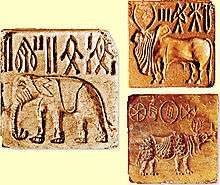

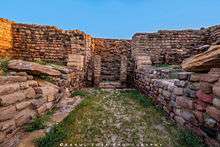
.jpeg)



